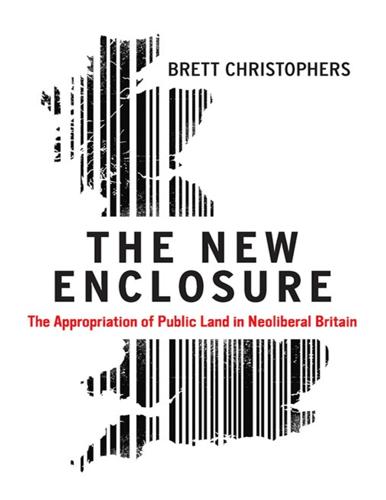
The New Enclosure: The Appropriation of Public Land in Neoliberal Britain
by
Brett Christophers
Published 6 Nov 2018
Land in their ‘strategic’ banks differs in two respects: first, it typically does not have planning permission, though, as Matt Griffith writes, it ‘may become developable through the planning system in the medium to long term’; and second, it is usually, but not always, held under option rather than being owned outright (see Chapter 3).1 An influential 2008 report by the Office of Fair Trading (OFT) estimated that over 80 per cent of land controlled by Britain’s major housebuilders sat in their strategic, rather than current, land banks.2 These banks are considerably more opaque than builders’ current banks. For one thing, their size is disclosed far less regularly. For another, these disclosures are much less reliable – not all options, for instance, are recorded in strategic land banks.3 As a result, in attempting to track changes in the size of builders’ land banks over time, we need to focus on their current banks, where the data are more readily available and probably more meaningful.4 These data show a dramatic increase in land-banking in recent years. The most common way of quantifying the size of a land bank is in terms of the number of years of housing supply or production at prevailing build-out rates – that is, the number of plots in the bank, divided by the number of plots completed in the previous twelve months.
…
Back in 2006, research by the Royal Town Planning Institute showed an average of 2.8 years land supply with implementable planning consent.1 The following year, the House Builders Federation collected data from twenty-one of the top UK housebuilding companies, finding that the average number of years of supply in the builders’ current banks was actually slightly lower – 2.5 years.2 And the year after that, sixteen of Britain’s top twenty-five housebuilders provided information about their land banks to the OFT, which estimated that, for these builders, the average current land bank contained a little over three years’ worth of supply.3 The OFT was relatively circumspect about the prevailing direction of travel in the magnitude of these banks – it merely noted ‘some evidence that landbanks have been increasing in recent years’ – but it is clear how things have progressed since then.4 In 2014, Sir Michael Lyons reported in his Housing Review that Britain’s major housebuilders were ‘currently sitting at around 4 to 5 years of supply at recent completion rates’.5 And more recently, in December 2016, the housing charity Shelter reported on the state of play in land banking at Britain’s ten biggest builders. Their short-term banks ranged in size from four to ten years’ worth of supply, averaging out at six years.6 Current land banks had more than doubled in size, in other words, since 2006–2007 – those years coinciding, of course, with a concerted effort by the government to release public land for home-building with planning permission in place. Why land privatization has coincided with mushrooming private-sector land banks, patently contributing to this growth if not exclusively causing it, is hard to say. Land banking is a complex affair, belying crude and simplistic generalizations.
…
In several cases, no building occurred before the resale; on other sites, no development at all has occurred years after the original sales’.3 The key point for our purposes is that land banks are the essential grist of this profitable non-construction activity. When the Cameron government embarked on the first phase of its public land-for-housing programme in 2011, it was perhaps understandable that speculative land-banking was not considered a concern, and thus that actual commitments to building houses were not made a condition of sale. Both the Callcutt and OFT reports had come to relatively benign conclusions about land-banking: it was a necessary part of the housebuilding business, and not, at that point, a cause for concern.

Who Owns England?: How We Lost Our Green and Pleasant Land, and How to Take It Back
by
Guy Shrubsole
Published 1 May 2019
Other similar schemes, however, escaped censure for some time afterwards: see Nick Duxbury, ‘Unregulated land banking firms escape FSA ruling’, Property Week, 24 April 2009, https://www.propertyweek.com/news/unregulated-land-banking-firms-escape-fsa-ruling-/3139070.article strategic land portfolio ‘Strategic Land’, http://www.legalandgeneralcapital.com/our-investments/list-of-investments/strategic-land.html Nearly all of it Land Registry Corporate & Commercial data extracts for Legal & General companies. My full investigation into the location of Legal & General’s land bank is online at https://whoownsengland.org/2018/02/04/how-pension-funds-are-land-banking-in-the-green-belt/ submitting proposals Savills, ‘Luton Strategic Employment Gateway: Proposals by Legal & General’, August 2012, http://www.slipend.co.uk/home/sites/default/files/LGLuton-Employment%20Gateway_FINAL_07%2008%2012_lr.pdf a small but crucial ‘Ransom strips in the UK’, 1 September 2015, http://www.rics.org/uk/knowledge/glossary/ransom-strips/ there will sometimes Neil O’Brien MP, ‘Green, pleasant and affordable: Why we need a new approach to supply and demand to solve Britain’s housing problem’, June 2018, http://www.ukonward.com/wp-content/uploads/2018/06/220618-Green-Pleasant.
…
Examining corporate control of land is also crucial to understanding the housing crisis. One particularly controversial aspect of the housing debate that has generated much heat, and little light, in recent years is the debacle over land banking. In common parlance, land banking is the practice of hoarding land and holding it back from development until its price increases. The American economist Henry George excoriated land banking as a blight on society. One of his followers famously bought a derelict plot of land in the middle of a city and, in a canny piece of political theatre, erected a billboard on which was written: ‘Everybody works but the vacant lot.
…
Land Registry INSPIRE maps still bear the scars – the tell-tale shapes of land cut up into neat square plots, laid out with imaginary roads to give a sense of verisimilitude to the fictitious housebuilding plans. Other similar land banking schemes, mostly based offshore, were eventually investigated and wound down by the UK Financial Services Authority, and the practice seemed to dry up. Appalling as these land banking scams were, they were clearly of a very different nature to the practices Sajid Javid was accusing law-abiding housing developers of. But other, wholly legal forms of land banking take place all the time. One such form is practised by UK pension funds and insurance companies, who buy up land as a long-term strategic investment.
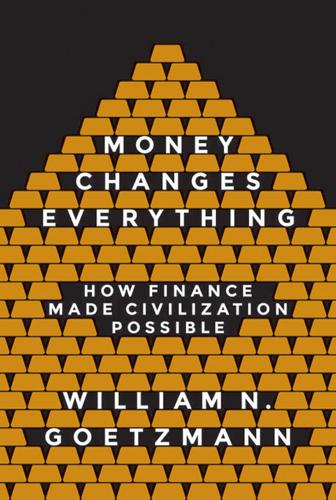
Money Changes Everything: How Finance Made Civilization Possible
by
William N. Goetzmann
Published 11 Apr 2016
See Templars knowledge: finance and development of, 10–11; transmitted on the Silk Road, 176 knowledge capital, and stock prices in 1920s, 483 Köll, Elisabeth, 188–89, 433–34 Kraakman, Reinier, 121–22, 126 Kumar, Alok, 487–88 Kuxen, 303 labor theory of value, 407–8; transfer of value to the future and, 412–13; young Soviet government and, 451 Lagash, 16, 35, 37, 403, 454 laissez-faire economics: in Ayn Rand’s philosophy, 452; legalist philosophy and, 170 land, and feudal rights, 219–20. See also feudal rights land banks: colonial American, 386–88, 390, 400; Law on, 351–54, 386; Reign of Terror and, 390–92 land speculation: of Dutch in American West, 393–95; in new capital of Washington, DC, 383, 396, 399; westward expansion of America and, 396–98, 399 Laurion silver mines, 87–90 Law, John: Banque Générale opened by, 354–55; Banque Royale of, 355, 356, 358–59, 360–62, 378; early life of, 347, 349; Essay on a Land Bank, 351–53; French government debt and, 355–56, 357; as gambler, 347, 349, 351, 377; land banks and, 351–54, 386; mathematical knowledge of, 349, 351, 379; Mississippi Bubble and, 347, 357–58, 361–62; Mississippi Company and, 12, 355–59; Money and Trade, 353–54, 361; portrait of, 348; as richest person in Europe, 347; satirized in Great Mirror of Folly, 376, 378–79; in Venice, 349–51 law of large numbers, 261–62, 264; Dutch investment fund and, 385; insurance and, 365; life annuities and, 269; option pricing and, 287 lead pollution, from Iberian mines, 133–34 Le Bris, David, 298–99 Lefèvre, Henri, 276, 279–82, 283 Legalism, Chinese, 170–71 legal systems: Athenian, 80–81; Babylonian, 19, 46, 48, 70; European, to adjudicate feudal rights, 220; Roman, 126–27, 234–35; of Toulouse, 294 Le Goff, Jacques, 233–34 Leibnitz, Gottfried, 261–63, 271 Lenin, Vladimir, 446–49, 452, 456, 491 Leonardo of Pisa (Fibonacci), 238–46, 247–48 Lévy, Paul, 283, 286 Lévy processes, 286 Lex Claudia, 106 Liber Abaci (Fibonacci), 238–46, 247–48 libertarianism, 452 Lieberman, Stephen, 27 life annuities, 254–55; Condorcet’s optimistic proposal for, 273–74, 275; de Moivre on, 265–66; De Witt’s tract on, 256–57, 262; for Fibonacci from Pisa, 245; French, 266–69, 273, 362, 517; Malthus on, 274–75; pooled, 382; problem of pricing, 262, 263–64, 265–66, 272; risks associated with, 258; in seventeenth-century Netherlands, 255–57, 322; Social Security as, 495, 498, 499, 502; sold by Templars, 212; tontines, 259, 266–69, 273 life expectancy: annuities and, 262, 263; global changes in, 7, 517 Ligato Pecuniae, 230–31, 232 Li Hongzhang, 430, 431, 432, 439 limited liability: Bubble Act and, 343; Chinese company with, 433–34; of Honor del Bazacle shares, 297; Muscovy Company lacking in, 310; of Roman mining operations, 128; Roman slaves and, 119–22; of shareholders of a corporation, 300; VOC (Dutch East India Company) moving to, 318.
…
DEAD TREASURE Sometime in the early 1990s, Antoin Murphy found himself looking at a manuscript of a hitherto unknown economic treatise titled Essay on a Land Bank. Although its provenance was unknown, it came up in the antiquarian book trade and was shown to Murphy due to his reputation as a top economic historian. He identified it as Law’s earliest known work as an economist. It was an extraordinary document that showed the first step in Law’s intellectual evolution. In the essay, Law proposed the creation of a bank in England backed by land rather than specie. The reason? Silver fluctuated in value due to variation in supply. The supply of land was fixed, and this made it a better form of money. Land banks had been proposed before, and indeed, Parliament had authorized the incorporation of a National Land Bank in 1696, whereby money would be raised from shareholders to extend mortgages to landowners.
…
It comes many times unsought for, and often goes away without reason, and when once lost, is hardly to be recovered.8 The National Land Bank failed to attract sufficient subscribers. Moneyed Whigs saw it as an attack on the primary position of the Bank of England, which they controlled. Plus, the terms of the subscription rights were evidently not economically attractive. The financial project to redefine wealth in terms of property did not fly. Despite this earlier failed attempt at a land bank by others, John Law took the concept a bold step further. Rather than write mortgages, why not have a bank that actually held land?

Rethinking the Economics of Land and Housing
by
Josh Ryan-Collins
,
Toby Lloyd
and
Laurie Macfarlane
Published 28 Feb 2017
The examples of Singapore, Hong Kong and South Korea show how planning gain and the spillover effects of income and population growth on land values can be partly socialised to benefit the nation, rather than a relatively concentrated class of landowners. In Germany, for example, the planning law freezes the value of the land when the local municipality decides to specify an area for residential construction.1 The uplift in land values then finances infrastructure. A national public land bank, as in Korea, or public or community-owned land banks able to acquire land at existing use values can achieve the same objective. In many respects the UK’s New Town building programme from 1946 to 1970 was also able to do this. Though addressing the UK’s pressing problems is important, the book also examines the neglect of land in economic theory more generally.
…
This has helped ensure that land and housing have remained affordable in South Korea – between 1995 and 2013 the ratio of house prices to income declined from a base of 100 at the beginning of 1995 to 62.3 at the end of 2013, while the UK’s shot up from 100 to 167.7 (Muellbauer, 2014b). In the UK, similar benefits could be achieved by establishing a national Land Bank, responsible for purchasing, developing and selling land for residential and commercial use, acquiring idle and vacant land for resale, and developing new towns. A ‘Land Bank of Britain’ could use public money to buy land without planning permission and then lease or sell land to private developers at development prices following the grant of planning permission. As well as being a source of land release for housing and other development, the increase in land values could provide significant sources of revenue for the government, as in South Korea and Singapore.
…
Act (1919) (the Addison Act), 78 housing quality, 97 housing supply, effect of residual valuation methodology, 98 housing tenure: European regulations, 32; housing costs by tenure, 179; leasehold-freehold, 213; reform proposals, 212–15; restricted sale tenures, 213–14; reversionary tenures, 214; trends, 82, 83, 106–7, 107; see also private rented sector housing wealth: age distribution, 181–2, 181; consumption-to-income ratio trends, 143–4, 144; increase, 158–9, 170; and increase in wealth-to-income ratio, 172–3; net property wealth distribution, 174–5, 174, 175, 176; and wealth inequality, 174–9 Howard, Sir Ebenezer, 75–6 human rights, 23 imputed rental income: Switzerland, 157; UK tax-exemption, 85, 104–5 income: consumption-to-income ratio trends, 143–4, 144; disposable income to house price ratio, 112–14, 114; effects of increased income, 9, 64 income inequality, 162–3 income tax, 69, 168–9 Industrial Revolution, 68–9 inequality: causes and consequences, 165–9; and excessive economic rent, 43; and financial instability, 185–7; Gini coefficient measures, 163, 177, 178; health and social problems, 185; and homeownership, 92; and house prices, 177–8; and housing costs, 179–80; income inequality, 162–3; and inheritance, 182; and land value, 46, 173, 190; and landownership, 26–7; and mortgage debt, 116; property and the state, 17–18; regional inequality, 165, 182–3; and taxation, 168–9; wealth inequality, 163–4, 174–9 infrastructure projects: compulsory land purchase, 31, 73, 196–7, 222; and land value, 6, 42, 194–5 inheritance, 19, 127, 182 inheritance tax (IHT), 104–5, 169, 202 Institute of New Economic Thinking, 218n11 iron and steel industry, 69 James II, King, 66, 80 Japan: credit window guidance, 207; credit-driven bubbles, 111; financial crash, 151–3; house price to income ratio, 112, 114; land prices, 32; mortgage market structure, 157; size of new-builds, 97 Jefferson, Thomas, 22, 26 Jubilee Line, 194–5 Keynes, John Maynard, 84 Keynesianism, 83, 84, 152 King, Mervyn, 154 Korean Land Corporation, 196 labour markets, and homeownership, 27–8 labour productivity, 165–7 land: changing economic role, 190; as collateral, 7, 20–1, 55, 127–8, 160; conflated with capital, 48–52; definition, 38; differences between land and capital, 52–7; and economic rent, 39–44, 56–7; factor of production, 37–8; financialisation, 14, 110–12; historical uses, 3–4; immobile and fixed nature, 55; limited supply, 4, 63; permanent and timeless space, 52–4; state acquisition, 30–1 Land Bank of Britain proposal, 196 land development taxes, 35 land pooling, 197–8 land prices: agricultural, 122–3; effect of financial crisis, 101; land banks (current and strategic), 96–7, 101; and planning regulations, 32; volatility, 8, 8; see also land value Land Registry, 63 land rights, US native population, 26 land taxes: and economic rent, 34–5, 45–8, 76–7, 199, 222; opposition, 57–8, 60, 77; political barriers, 35; theoretical advantages, 34–5; see also land value tax (LVT) land title, 21, 31, 36 land value: asset for the future, 6–7; determined by current use, 6; effect on capital of rising costs, 56; factors outside owner’s control, 55–6; increase over time, 53–4; and inequality, 46, 173, 190; lack of reliable public dataset, 63–4, 219; location and infrastructure, 6; residual valuation methodology, 98–9; site value vs market value, 202; state interventions, 30; uplift created by planning permission, 79–80, 216; use value vs market value, 110; see also land prices land value tax (LVT): Australia, 204–5; Denmark, 204; economic case for reform, 199–201; Henry George’s single tax movement, 46–8, 57–8; Mirlees Review recommendation, 199–200; People’s Budget proposal (1909), 48n9, 76–7; practical and political challenges, 201–5; split rate taxation, 204–5 land-credit feedback cycle, 8, 114–19, 190–1, 222 landlords: taxation, 85; see also buy-to-let (BTL); private rented sector ‘The Landlord’s Game’, 47 landownership: benefits of public ownership, 193–6; and economic rent, 10–13; ‘high income-elasticity of demand’, 9; and inequality, 26–7; land pooling, 197–8; modern economic theories, 16–18; moral qualities, 22; multiple forms, 18–20; and political power, 22–3; and social status, 20; as theft, 22–5, 43, 189; see also property ownership Lassalle, Ferdinand, 43 leasehold-freehold tenure, 213 leases, lifetime leases, 74 legacy landowners, 197–8 Lenin, Vladimir, 43 Letchworth Garden City, 75 Letchworth Heritage Foundation, 75 leverage, 184 liberal economics see classical economics lifecycle model, 124–8, 159 living conditions, 70–1 Lloyd George, David, 48, 76, 78 Lloyds TSB, 139 loan-to-value (LTV) ratios, 139, 156, 157 location, 6, 40–3 Locke, John, 16–18, 26 London: Bishops’ Avenue, 109; Boundary Estate, 73; Jubilee Line, 194–5; Old Nichol, 73; private rented sector, 223; St Clements Community Land Trust, 214 mainstream economics see neoclassical economics Malthus, Thomas, 40 manufacturing industry, 168 marginal productivity theory, 49–50, 51, 56, 57–9, 165–7 Marshall, Alfred, 55 Marx, Karl, 18, 43, 59, 61 mercantilism, 38, 70 microeconomics, 34, 51, 53 Mill, John Stuart, 25, 45, 199 Milton Keynes, 88 Minsky, Hyman, 152–3, 155 MIRAS (mortgage interest relief at source), 86 Mirrlees Review, 199–200 monetarism, 86, 87 Monopoly, 47 mortgage lending: affordability pressures, 100; bad debt, 140; bank funding arrangements, 131; as credit creation, 114; debt-to-income ratio, 115–16, 116, 139, 159, 186; default rates, 141; deregulation, 88, 132–5, 178; financial crisis collapse, 139–40; full recourse vs non-recourse loans, 141–2; house price-credit feedback cycle, 119–24; importance in banks’ lending portfolios, 61, 119; interest rates for landlords, 77; lifecycle model, 124–8, 159; loan-to-income limits, 155; loan-to-value (LTV) ratios, 139, 156, 157; mortgage debt-to-GDP ratio, 156–8, 156; mortgage interest relief at source (MIRAS), 86; reform proposals, 211–12; residential mortgage-backed securities (RMBS), 137–9, 140, 160; tax relief, 133; trends, 107; see also buy-to-let (BTL) Muellbauer, John, 110 mutual co-ownership, 86 Napoleonic Wars, 69 national accounts, lack of land value information, 63–4, 219 national income: wealth to national income ratio, 171–4, 171, 172; see also GDP nationalisation, 43 natural law, 25–6 natural property rights theory, 16–18 negative equity, 123, 133–4 neoclassical economics, 5, 17, 27, 48–9, 50, 52, 57, 111, 192 Netherlands, land pooling, 198 New Keynesianism, 125n6 New Towns programme, 66, 71, 80–1, 88, 184, 197 new-build homes, 97 NIMBYism, 24 Northern Rock, 136–7 Nozick, Robert, 26 OECD, 64, 219, 220 Office for National Statistics, Blue Book, 219 oil sector, 44 OPEC (Organization of the Petroleum Exporting Countries), 44 orthodox economics see neoclassical economics Oswald, Andrew J., 27 overseas investment, 100, 122, 149, 160, 183 Owen, Robert, 71 Paine, Thomas, 25 Pareto efficiency, 166n1 patents, 44 Peabody, George, 71 Peel, Robert, 43 Pennsylvania, split rate taxation, 205 Phillips, Elizabeth J.

Big Capital: Who Is London For?
by
Anna Minton
Published 31 May 2017
Since Gordon Brown failed to heed Kate Barker’s warning of how housebuilders trickle out homes, no governing party has challenged the monopoly the top housebuilders have over the industry. When he was Leader of the Opposition in 2014, Ed Miliband identified similar issues and criticized developers for ‘land banking’, the process whereby housebuilders buy up land and fail to build on it as they wait for it to rise in value. An investigation by the Guardian found that Britain’s biggest housebuilders are sitting on enough land with planning permission to create more than 600,000 new homes. Berkeley, Barratt, Persimmon and Taylor Wimpey, the four biggest companies in the industry, own more than three quarters of the plots, and give over £1.5 billion to shareholders.17 Miliband threatened that under a Labour government, developers would have to ‘use it or lose it’, declaring that ‘we’ve got to break the power of the big developers because they’re sitting on hundreds of thousands of places for homes with planning permission and not building because they’re waiting for it to accumulate in value.’18 In 2016, Secretary of State for Communities Sajid Javid echoed these concerns in a keynote speech to housebuilders, telling them that: ‘I cannot look the other way when I see land banking holding up development.
…
Berkeley, Barratt, Persimmon and Taylor Wimpey, the four biggest companies in the industry, own more than three quarters of the plots, and give over £1.5 billion to shareholders.17 Miliband threatened that under a Labour government, developers would have to ‘use it or lose it’, declaring that ‘we’ve got to break the power of the big developers because they’re sitting on hundreds of thousands of places for homes with planning permission and not building because they’re waiting for it to accumulate in value.’18 In 2016, Secretary of State for Communities Sajid Javid echoed these concerns in a keynote speech to housebuilders, telling them that: ‘I cannot look the other way when I see land banking holding up development. Some of you have conceded to me, in private, that it happens. Some of you still deny it’s an issue. But there’s clearly something going on. The number of plots approved for residential development each year rose by 59 per cent between 2011 and 2015. But the number of building starts rose by just 29 per cent.’19 But despite these threats very little has happened to stop the practice, and the stranglehold of the developers continues.
…
But the number of building starts rose by just 29 per cent.’19 But despite these threats very little has happened to stop the practice, and the stranglehold of the developers continues. When the government published its Housing White Paper in 2017 it proposed the maximum amount of time developers are allowed to land bank be reduced from three years to two, but with caveats, leading to criticisms that this will be difficult to implement. Instead, in urging the removal of planning restrictions, the Conservatives appear to be hoping for a return to the 1930s, before we had a functioning planning system and the private sector produced the classic 1930s semi-detached houses which define London’s sprawling metroland suburbs – and which gave impetus to calls for a greenbelt.
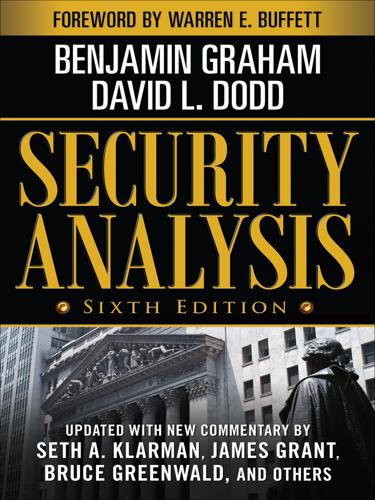
Security Analysis
by
Benjamin Graham
and
David Dodd
Published 1 Jan 1962
The price record shows that the Kansas City Terminal Railway Company 4s frequently sold at no higher prices than representative issues of individual guarantor companies which later turned out to be of questionable soundness, whereas at no time was the safety of the Terminal bond ever a matter of doubt.12 It would seem good policy for investors, therefore, to favor bonds of this type, which carry the guaranty of a number of substantial enterprises, in preference to the obligations of a single company. Federal Land Bank Bonds. A somewhat different aspect of the joint and several guarantee appears in the important case of the Federal Land Bank bonds, which are secured by deposit of farm mortgages. The obligations of each of the 12 separate banks are guaranteed by the 11 others, so that each Federal Land Bank bond is in reality a liability of the entire system. When these banks were organized, there was created concurrently a group of Joint Stock Land Banks which also issued bonds, but the obligations of one Joint Stock Bank were not guaranteed by the others.13 Both sets of land banks were under United States government supervision and the bonds of both were made exempt from federal taxation.
…
When these banks were organized, there was created concurrently a group of Joint Stock Land Banks which also issued bonds, but the obligations of one Joint Stock Bank were not guaranteed by the others.13 Both sets of land banks were under United States government supervision and the bonds of both were made exempt from federal taxation. Practically all of the stock of the Federal Land Banks was subscribed for originally by the United States government (which, however, did not assume liability for their bonds); the Joint Stock Land Bank shares were privately owned. At the inception of this dual system, investors were disposed to consider the federal supervision and tax exemption as a virtual guarantee of the safety of the Joint Stock Land Bank bonds, and they were therefore willing to buy them at a yield only ½% higher than that returned by the Federal Land Bank bonds. In comparing the nonguaranteed Joint Stock bonds with the mutually guaranteed federal bonds, the following observations might well have been made: 1.
…
For a comprehensive account and criticism of these banks, see Carl H. Schwartz, “Financial Study of the Joint Stock Land Banks,” Washington, D. C., 1938. 14 A number of the Joint Stock bond issues defaulted during 1930–1932, a large proportion sold at receivership prices, and all of them declined to a speculative price level. On the other hand, not only were there no defaults among the Federal Land Bank bonds, but their prices suffered a relatively moderate shrinkage, remaining consistently on an investment level. This much more satisfactory experience of the investor in the Federal Land Bank bonds was due in good part to the additional capital subscribed by the United States government to these Banks, and to the closer supervision to which they were subjected, but the joint and several guarantee undoubtedly proved of considerable benefit.

The Price of Time: The Real Story of Interest
by
Edward Chancellor
Published 15 Aug 2022
In conformity with Wicksell’s theory, the disparity between the natural and the market rates of interest accentuated credit expansion and played an important role in the sharp upswing of prices’ (‘Prices and Wages at Paris under John Law’s System’, p. 63; see also François Velde, ‘John Law’s System’, American Economic Review, 97 (2), 2007). fn10 In his ‘Essay on the Land Bank’ (written around 1704), Law criticized the rival land bank scheme of Hugh Chamberlen, who proposed supplying £10,000 of bank notes against land collateral, yielding an annual income of just £150 (i.e. a capitalization rate of 1.5 per cent), and attacked John Briscoe’s plan for a land bank which mooted an even lower lending rate. fn11 That inflationary forces initially raise prices in some parts of the economy before becoming more widespread is known as the ‘Cantillon effect’. 5: John Bull Cannot Stand Two Per Cent fn1 ‘Bad business takes time to grow – especially bad lending business, which is the most dangerous, because when discovered it saps credit, and destroys the spring of industry’ (Bagehot, Collected Works, vol.
…
Defoe scorned any claim that Law might have to originality; the notion that paper credit could serve as money, lessening the need for hard currency, he wrote, ‘are common topics that every stock-jobber is master of’.8 Nor was Law the first to propose a land bank; that honour belongs to a certain William Potter who came up with the idea during Cromwell’s Protectorate. Law was one of several contemporary land bank advocates writing at the close of the seventeenth century. Another influence on Law’s thinking was the Bank of England, which opened its doors in the spring of 1694 at around the date of his murder conviction. The Bank’s first issue of paper notes was backed not by gold but by a claim on the public credit, which derived from a large loan made by shareholders to the government of William of Orange.
…
S., 31, 95† Jews, 18 John Deere (American company), 167 Johnson, Lyndon B., 109* Joplin, Thomas, 64–5 Jordan, Virgil, 184–5 JP Morgan Chase, 232† Juglar, Clément, 143, 153 junk bonds, 222–3, 305, 306–7 Justinian, Code of, 25 Kane, Edward, 145 Katsenelson, Vitaliy, 177 Kaufman, Dr Henry, 109–10 Kay, John, 121 Keynes, John Maynard: advocates price stability, 87, 94, 97; and demographics, 125, 126, 127; and economic nationalism, 261–2; euthanasia of the rentier ambition, 302, 302*; fails to foresee 1929 crash, 94–5; and Gesell’s rusting money, 243, 294; on Hayek and his fellow ‘liquidationists’, 100; on investing in stock market, 239; on liquidity risk, 226, 227; rejects ‘natural rate’ concept, xxiv–xxv, 42, 97*, 142*; views on interest, xxiv–xxv, 11, 42, 86, 97*, 125, 142, 142*, 195, 245, 311*; General Theory, 97*, 226; Treatise on Money (1931), 11, 97, 142* King, Mervyn, 105, 121, 194, 230*, 304 King, Robert, 266 Kippner, Greta, 110* KKR (buyout firm), 222 Klarman, Seth, 308, 309 Klecker, Matthew, 141 kleptocrats, 258 Kmart, 169–70 Knickerbocker Trust Company, 83–4, 84* Koby, Yann, 236 Kohn, Donald, 112–13 Koons, Jeff, Balloon Dog (Orange), 208 Kornai, János, 278 Kraft Heinz Company, 161, 169 Kravis, Henry, 222 Krugman, Paul, 113*, 142, 278 Kuroda, Haruhiko, 119, 120, 122 Kynaston, David, 232* La Vega, Joseph de, 68–9 Lagarde, Christine, 119 Lagash (Mesopotamian city), 8, 9, 200 Laínez, Father Diego, 24 Lampert, Eddie, 169–70 land: China’s ‘land bubble’ economy, 272, 273–4, 288; as collateral, 5, 7, 47; fraudulently inflated values, 80; and ‘fructification theory’, xxiii*; interest and price of, 31, 33, 34–5, 39, 42, 44, 53–4, 173, 174; land bank concept, 47, 48, 59, 59*; as productive/income producing, 15, 26, 37, 181, 265; value of in post-crisis decade, 173, 174 Larsa (Babylonian city), 7 Lassalle, Ferdinand, 188 Latvia, 253 Law, John, xxii, 30–31, 45–8; establishes General Bank (1716), 49–50; as French Finance Minister, 46, 57, 298; land bank concept, 47, 48, 59, 59*; pamphlets on nature of money, 47, 49, 55–6, 59; proposal to French Regent, 48–9 see also France; Mississippi bubble Law, William, of Lauriston, 45 Lawson, Thomas, 156 Le Goff, Jacques, 28 Lee, Aileen, 148 Lee, Jamie, 215 Leffingwell, Russell, 93–4 Lehman Brothers bankruptcy (2008), xxi, 60, 114 Leijonhufvud, Axel, 121, 247 Lenin, V.
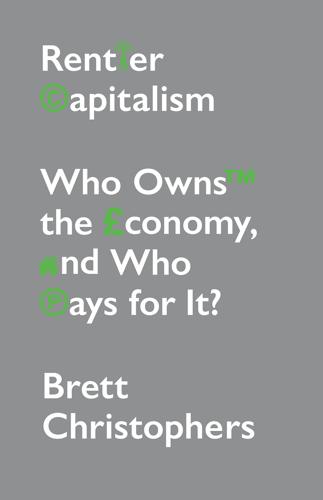
Rentier Capitalism: Who Owns the Economy, and Who Pays for It?
by
Brett Christophers
Published 17 Nov 2020
Table 7.1 Major UK corporate land rentiers by category Property companies Real estate investment trusts (REITs) Financial investors Property developers / housebuilders Infrastructure rentiers Other Canary Wharf Group • Property portfolio valued at £7.9 billion (end 2017) • Rental income £278 million (2017) Grosvenor Group • UK property portfolio valued at £3.2 billion (end 2016) • UK rental income £111m million (2016) British Land • Property portfolio valued at £10.0 billion (March 2018) • Rental income £441 million (year to March 2018) Land Securities • Property portfolio valued at £14.1 billion (March 2018) • Rental income £663 million (year to March 2018) Aviva • Property portfolio valued at £10.8 billion (end 2017), of which £6.6 billion in UK • Rental income £574m million (2017) (UK share not specified) Legal & General • Property portfolio valued at £8.3 billion (end 2017) • Rental income £467 million (2017) Persimmon (at end 2017) • 52,585 plots in short-term owned land bank + 24,482 plots in long-term owned land bank, with a combined value of £2.0 billion • 100,000+ potential plots in long-term controlled strategic pipeline Taylor Wimpey (at end 2017) • 56,619 plots in UK short-term owned land bank, valued at £2.3 billion • 26,836 plots in UK long-term owned land bank, valued at £90 million • 90,409 potential plots in UK long-term controlled strategic pipeline National Grid • Property portfolio valued at £2.3 billion (March 2018) • Property business profits £84 million (year to March 2018) Royal Mail • Property portfolio valued at £845 million (March 2018) Big Yellow Group • Property portfolio valued at £1.3 billion (March 2018) • Rental income £117 million (year to March 2018) Tesco • Property portfolio valued at £16.3 billion (February 2018) • Rental income £372 million (year to February 2018) Source: Author Before looking in a bit more detail at each category, it is worth highlighting a vital characteristic that is common to all of them: the business of these rentiers is primarily in commercial property – retail, office and industrial – and undeveloped land.
…
The 1980s, in short, saw NFC become a property developer. Thompson recalled: Property development was almost thrust upon us. We acquired a land bank which with the UK property boom of the 1980s has proved to be more valuable than anyone imagined. We brought in the skills, not just to sell sites – which was all that we were allowed to do when we were state owned – but to develop them. In future we would act as the property developer. We have made increasing profits out of this activity … We inherited the advantage of a first-class land bank. Thompson admitted to ‘a nagging doubt as to whether this is really our world … the nagging doubt has remained with me, though not, I hastily add, with my colleagues’.2 Given the wealth that inheritance of the land bank generated for Thompson’s colleagues, their lack of introspection is probably not so surprising.
…
Thompson admitted to ‘a nagging doubt as to whether this is really our world … the nagging doubt has remained with me, though not, I hastily add, with my colleagues’.2 Given the wealth that inheritance of the land bank generated for Thompson’s colleagues, their lack of introspection is probably not so surprising. NFC, whose vestiges today constitute an operating division of the international courier service company Deutsche Post, is far from the only former UK public enterprise to have generated substantial post-privatization income from land – the icing on the cake, as it were, of the core infrastructure rents explored in the previous chapter. When these enterprises were privatized, the assets transferred very often included large tracts of land along with network infrastructures, workforces, customer contracts, and so forth.

Stuck: How the Privileged and the Propertied Broke the Engine of American Opportunity
by
Yoni Appelbaum
Published 17 Feb 2025
“It’s not just the loss of 60 percent of the population; it’s the loss of 90 percent of the wealth. That’s”—he trails off, and sighs heavily—“that’s a nightmare.” Dan made a name for himself here by creating the Genesee County Land Bank. Speculators were snapping up the thousands of tax-delinquent houses in Flint but leaving the dwellings derelict, fueling crime and fires. Instead of allowing properties to be sold off to speculators, the Land Bank took possession of tax-delinquent properties itself, rehabilitating those for which there was a plausible resale market and tearing down the rest to clear the lots, removing the blighted structures.
…
If these Craftsmen were in good condition, their front-facing, low-gabled roofs painted in pastels, they’d fit right into a fashionable neighborhood. Instead, numbers are spray-painted onto them in bright yellow, identifying them to maintenance crews as teardowns. There are so many houses like these slated for demolition that the Genesee County Land Bank can’t find the funds to knock them all down. Photo taken by the author. An abandoned home on East Pasadena Avenue in Flint, marked by the Land Bank for clearance. Down the street I find Moe Wright sitting on a folding chair, because it’s too hot to sit in a car. His grandfather came to Flint to work at General Motors when his dad was a young boy, and both his father and his uncle retired from GM.
…
Talk to anyone of a certain age in Flint for long enough, and the ghosts of Flint’s golden age pay their visit. Dan kicked in the door and walked into the eight-hundred-square-foot, single-story house, past his parents’ room, past the bedroom he shared with his brother. He had come to say goodbye. The Land Bank tore down the small blue house, and all that remains is a grassy lot. Dan’s grandfather came to this neighborhood on the east side from rural Michigan in the early 1920s. He’d been a lumberjack, but the Michigan forests had been cut, and the future lay not in harvesting wood but in turning it into things.
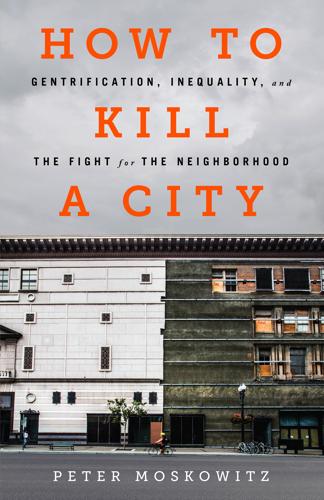
How to Kill a City: The Real Story of Gentrification
by
Peter Moskowitz
Published 7 Mar 2017
The current method of dealing with these properties in New Orleans and Detroit is to sell them off to the highest bidder instead of figuring out a more productive public or semi-public use for them. Land banking would not have to mean never selling the land, but it could mean adding conditions to development—for example, requiring developers to build a certain percentage of affordable housing before land is sold. And with a good land-banking program, a local government could open up the decision-making process to residents, requiring public input before a piece of land is sold off or developed. This is already happening on a small scale: all four cities in this book have small nonprofits working to collectively buy land and keep it affordable.
…
Expand, protect, and make accessible public lands. In New York, 30 percent of all land is public (mostly streets and sidewalks). Half of the other 70 percent is taken up by private development, the other half by city infrastructure, institutions, and public space. The little land that’s left should be land-banked—that is, taken off the market—by the city. In the 1980s, after the city’s economic collapse, the city owned nearly half of the buildings in Harlem. What would have happened if, instead of selling those buildings off to private developers at bargain-basement prices, which is what the city did, it instead preserved those buildings as city property and turned them into affordable housing and community space?
…
The share of tech workers living in the Bay Area: Ashley Rodriguez, “Tech Workers Are Increasingly Looking to Leave Silicon Valley,” Quartz, February 29, 2016. Index absentee homeownership, 169–170 Adams, Eric, 208 affordable housing, 29, 144. See also public housing demolition of, 52 lack of government support for, 21, 134, 169, 179 land banking and, 211 in New Orleans, 29 in New York City, 145, 169, 173, 179–180, 190, 199–200, 203–204, 212 racial segregation and, 110 in San Francisco, 131–134=135 SROs as, 135 Airbnb, 61–62, 134, 136, 211 Angotti, Tom, 210 Aristil, Tim, 129 Atlantic Yards (Brooklyn), 174, 202 Back to the City Conference, 32 Baker, Richard, 53 Baldwin, James, 168 ballot initiatives, 211 Beame, Abraham, 191–192 Berlin, 142–143, 184, 214 Berni, Ryan, 43 Bigard, Ashana, 19–23, 26–30, 64 Bing, Dave, 83 Black Lives Matter movement, 214 Blanco, Kathleen, 18, 26, 48–49, 50 de Blasio, Bill, 144, 170, 175, 187–188, 202–203 gentrification and, 201 zoning laws and, 190 Bloomberg, Michael, 41, 169–170, 179, 201–204 Bolaños, Annabelle, 131, 144, 148 Boston, MA, 107 Boyd, Alicia, 198–200, 207, 210 Brash, Julian, 215 Bratton, Bill, 175 Brinkley, Kenny, 103–104 Broder & Sachse, 74, 76 “broken windows” policing, 175 Brooklyn, NY, 8, 176–180, 197–198, 217.
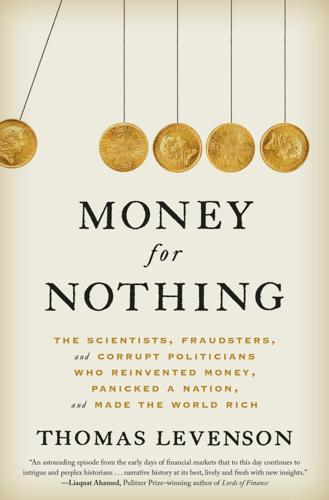
Money for Nothing
by
Thomas Levenson
Published 18 Aug 2020
What distinguished Law from many of his contemporaries, though, was his eagerness to test out his theories in the real world. His first such attempt was a variation of a project that had already been proposed by others: a land bank—a money-creating institution that would issue banknotes supported not by deposits of precious metal but by the production of the acreage within any given jurisdiction. Such land banks had been suggested in London in the preceding decade, but Law moved past his predecessors to come up with a much more modern view of what gives money its value, in a series of intellectual steps traced by the historian Antoin E.
…
Law argued that because the supply and demand for money set its value, conscious decisions about the amount of money to be made available within a nation could shape economic outcomes for any government willing to create the institution—his land bank—that could play that role. Equally important, he recognized that the forms of money that could affect such outcomes were not restricted to legal tender, coins, or even the paper currency a land bank could issue. “The stocks of the East India Companies, of the Bank, Irish debentures, etc.,” he wrote, “are received in some payments because their value though uncertain what it will be yet at the time it is known and those who think these stocks will rise rather than fall and are willing to run the hazard will prefer them to the same sum in silver money”—or to a banknote.
…
For Law the goal was to interrogate everything within the world of trade, commerce, production—anything to do with getting and spending—that could illuminate just what money is and does. A land bank was barely the beginning of Law’s intellectual journey. It was a long way from the experiment he would ultimately attempt, his version of what would be attempted by the South Sea Company. But it set him on course for that destination. Law’s next step was to push past these initial thoughts. Money made of metal, or even, as in his early land bank proposals, backed by actual fields of dirt, was intimately connected to the material world. Once he realized that shares in trading companies could perform many of the same duties handled by money derived from such solid pieces of the material world, Law came to argue that such financial inventions formed a numerical representation of much of the economy—all the growing and manufacturing and trading and craft that could be parceled out as shares.

Retrofitting Suburbia, Updated Edition: Urban Design Solutions for Redesigning Suburbs
by
Ellen Dunham-Jones
and
June Williamson
Published 23 Mar 2011
“Building C-Burbia,” another winning proposal from the 2010 Build a Better Burb ideas design competition, proposes a design policy to address climate change by retrofitting sprawl with carbon sink landscapes, opportunistically planted in highway verges, arterial medians, and subdivision sidewalks, as well as in “ecological easements” on private property. Bike lanes can be paved with permeable grass-crete to both sequester carbon and reduce stormwater runoff, as can land-banked vacant lots. Credit: Renderings by Denise Hoffman Brandt, Alexa Helsell, and Bronwyn Gropp, 2010, courtesy of the Long Island Index. Many of these benefits are manifesting in the growing suburban farming movement, as chronicled by Fritz Haeg in the book Edible Estates. Homeowners are transforming their yards into vegetable gardens and keeping hens for fresh eggs, although sometimes they need to redraft subdivision CC&Rs for permission to do so.
…
If you were given X billion dollars (the amount depends on the size of the city) to buy up failing commercial real estate and convert it to parkland, how would you use it to realize your long-term regional plans? Investment banker Michael Messner believes the banking system is too weak to absorb the $1.4 trillion in commercial mortgages that are coming due and is proposing that the Treasury Department establish a zero interest land bank to buy up excess underperforming commercial property (the “red fields”), convert and maintain them as parks (the “green fields”) for 10 years or until the economy recovers sufficiently to redevelop approximately 70 percent of the total land. It is a bold proposal, which, regardless of its ultimate ability to secure funding, is nonetheless succeeding at helping several cities envision transformational sustainable changes through retrofitting on a large scale.
…
Conversely, it is the inclusion of retail and restaurants in the mix that makes the apartments and condominiums attractive. In these cases, such as The Colony in SouthPark, outside Charlotte and Gramercy in Carmel, Indiana, the buffering garden apartment complexes, some with golf courses, have functioned as a community “land bank” of sorts. They are like low-lying fruit to developers seeking redevelopment opportunities because they are single parcel, were not generally built to high standards, and are now aging. As Christopher Jones, a director of planning and development for Beazer Homes in Atlanta, says, the purchase of below-market apartment complexes “affords us acreage we wouldn’t normally be able to acquire.”35 Accommodating New Immigrants: Brookside Apartments and Gulfton Brookside Apartments in College Park, near Hartsfield-Jackson Airport in Atlanta, began life in the early 1970s as The Windjammer.
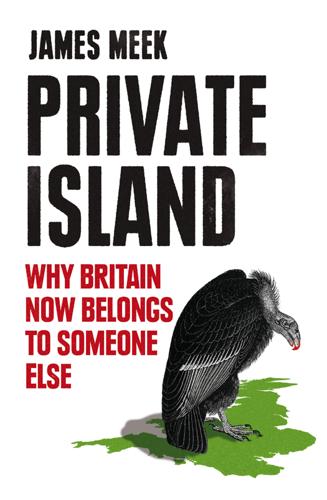
Private Island: Why Britain Now Belongs to Someone Else
by
James Meek
Published 18 Aug 2014
Britain’s established housebuilders, Griffith reckons, no longer have housebuilding as their primary function. They’ve essentially become dealers in land. Griffith estimates British housebuilders have enough land to build 1.5 million houses. This is much higher than most estimates because he includes not only land that has been given planning permission for homes to be built on it but also the shadow land bank: the vast stretches of agricultural land that housebuilders’ canny local agents guess will get planning permission in future, and have tied up through confidential option deals with landowners. Why is this land not being built on faster? Because the price the builders paid for the land is tied to the price they expect to get for the houses when they do finally build on it.
…
In lean times they can’t build, because to do so would be to acknowledge that they overpaid for the land, which would threaten them and the banks that lent to them with massive losses through the devaluation of their assets. Instead of competing to build the most attractive houses, the firms in the private housebuilding oligopoly compete over who can best use their land-banking skills to anticipate the next housing bubble and survive the last one. The whole system incentivises land hoarding and an undersupply of new homes compared to demand, to keep prices high. This, in turn, incentivises banks to favour property loans over other forms of lending. An incredible 76 per cent of all bank loans in Britain go to property, and 64 per cent of that to residential mortgages.
…
Against this is David Orr’s prescription: to increase housing supply at the other end of the market with a relatively small increase in government funding to housing associations, and to hand council housing over to a new set of European-style municipal housing agencies that could borrow money without adding to the national debt. Housing associations and councils have land banks of their own and every reason to build on them. ‘What is the thing that most characterises subsidised housing? Answer: subsidy,’ Orr says. ‘If we had a government that wanted to see a significant increase in the supply of new homes they would stop asking “Can we do it?” and they would start asking “How can we do it?”
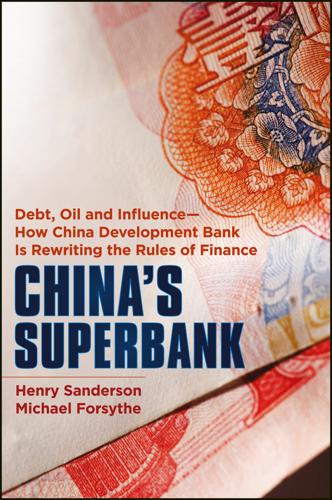
China's Superbank
by
Henry Sanderson
and
Michael Forsythe
Published 26 Sep 2012
The East River and Hudson are there, too, with water bounding three sides of the planned financial center, which lies on an oxbow of the Hai River. So is Lincoln Center, which is advising the local government on setting up a new arts center in the development, called the Yujiapu Financial District. Tianjin’s history with CDB goes back to 2003, when the bank signed the biggest loan agreement in China at the time with the city’s land bank, a loan of 50 billion yuan, which was later handed over to the financing vehicle. At the beginning of spring of that year CDB vice governor Yao Zhongmin held talks with newly arrived Mayor Dai Xianglong, who had beaten out Chen for the top job at the central bank five years earlier. Yao proposed using revenue from land sales to guarantee the loans from CDB.
…
Before the bank turned up, Tianjin had been able to afford maintenance of its existing infrastructure only, not new building, according to a book on the case published by CDB and Renmin University.38 From 1999 to 2003, Tianjin’s average fiscal funds every year for city infrastructure were a measly 6.3 billion yuan, which was hampering its development as a port. Setting up the financing vehicle put the infrastructure funding on a “market basis.” Under CDB’s loan deal, the land bank had the rights to sell the land in the central city and would pay back the proceeds straight into its account at Tianjin’s CDB branch before being transferred to the city’s account in the same bank. CDB could thus automatically take the money it was owed and could supervise the process of funds transfer.
…
By 2009, it was a different story: China Index Academy estimated the city’s land sales revenue was 73.2 billion yuan, a 67 percent increase over 2008. While the outbreak of severe acute respiratory syndrome (SARS) in early 2003 in Beijing intervened and prevented Chen Yuan from visiting Tianjin to sign the deal, it was eventually signed in June of that year. The original loan contract was signed with the city’s land bank; in 2004, the city set up an LGFV with four subsidiaries to handle the different projects, including two subway lines, greening of the city, and riverside infrastructure development. The income from the subway projects only needed to cover operating costs; it didn’t need to pay back the loan; the money to pay back the loan for all the projects would nearly all come from government income from selling land rights.

Economists and the Powerful
by
Norbert Haring
,
Norbert H. Ring
and
Niall Douglas
Published 30 Sep 2012
The farmers, on the other hand, were not served by the existing banks in their financial needs and were deeply in debt, mostly with tax liabilities. The land banks proposed as the main alternative to the merchant banks would benefit them the most. These public entities would issue government bills of debt secured by land. Bill holders could use them to pay taxes. As producers and debtors, farmers would benefit from rising prices. Thus they wanted generous money supplied by government. As taxpayers, they would benefit from the fact that the government would earn interest on the money created and would thus need fewer taxes (Nettels 1962). As these strong financial interests opposed each other, fights over land banks broke out in various states.
…
With the bank up and running, he borrowed money from it on behalf of the government to the benefit of himself as owner of the bank. He also conferred on his own bank a monopoly license to issue paper money and the privilege to have its notes accepted for duty and taxes on par with gold (Rothbard 1985/2008). Morris suffered a setback, though. In the charged climate of the fights about land banks in 1785, his Bank of North America was accused of abusing political power. In September 1785, the Philadelphia legislature annulled the bank’s state charter. Morris later declined the offer to be the first secretary of the treasury in 1789 and suggested instead his banker friend Alexander Hamilton.
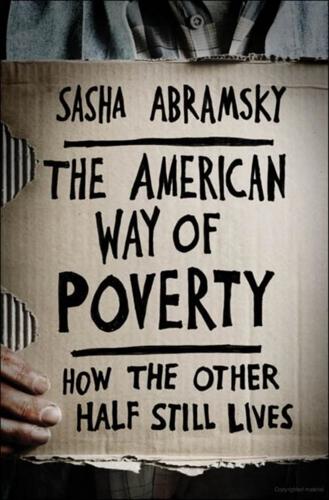
The American Way of Poverty: How the Other Half Still Lives
by
Sasha Abramsky
Published 15 Mar 2013
Above all, we could elect people willing to go to bat for valuable communal goods such as higher education; willing, and able, to explain to the public the necessity of raising enough taxes to build protective firewalls around proven success stories such as the Pell Grants and to try out new programs, such as the EOF, so as to reduce the crippling levels of debt too many students today leave college with. LAND BANKS, STATE BANKS, AND THE NORTH DAKOTA WAY Let’s continue thinking about connections. Boosting wages, making higher education more accessible, perhaps setting in place minimum income standards—all are good starting points. But what about building up public and environmental infrastructure? What if there were ways to kill two birds with one stone, using public funds to improve the commons in a way that simultaneously reduced poverty and stimulated a renaissance of American manufacturing and industry?
…
That’s what the Mott Foundation was doing in Flint, Michigan, a city long bedeviled by high unemployment and low educational attainment levels, where it worked with local companies to train several dozen workers to be able to repair distressed, foreclosed-on properties, gathered together into what was called a “Land Bank”—which they were then allowed to buy at a discount after the work was completed. It was a great idea: tackling blight, rebuilding the value of properties no one wanted, providing an affordable entry point into a housing market from which too many impoverished families had historically been excluded.
…
See also Guaranteed income; Minimum wage Income distribution, 34, 38 Income inequality, 26–28, 45, 53–54, 55, 81–82 Income volatility, 30–31 India, 251 Indiana, 10, 106 Individual freedom, vs. economic justice, 3, 64 Industries, green, 264–266 Infant mortality, 24, 25, 33–34 Infrastructure, public and private, 263–264 Iowa Citizens for Community Improvement, 36 Japan, 245 Job training/retraining programs, 305–306, 306–310 and community building, 308–309, 309–312 Jobs, green, 264–266 Johnson, Arley, 196 Johnson, Kevin, 276 Johnson, Lyndon, 73, 74, 75–78, 216 Johnston, David Cay, 53–54 Joint Economic Committee of Congress, 3 Jones, Jessica, 107 Jones, Van, 264, 265 Jones, Will, 308–309, 320 Joseph, Clara, 67–68 Joseph, Matthew, 59, 322–323 Joseph, Michael, 168–169 Juneau, Denise, 278 Kalbach, Barb, 36–37 Kansas City, Missouri, 117–118 Katz, Michael, 84, 136 Kennedy, John, 73, 74, 76 Kennedy, Robert, 78–79, 80, 96, 200, 230 Kennedy, Teddy, 291 Kentucky, 106 Keynes, John Maynard, 84–85 King, Martin Luther, 79–80, 126 Kitzhaber, John, 227 Koch brothers, 52 Kostelnick, Lauren, 31 Kristof, Nicholas, 219 Kuzman, James, 146–148, 280 Ladd, Helen, 281–282 Lampman, Robert, 3 Land banks, 265. See also State banks Lange, Dorothea, 96 Las Vegas, 60–61, 146–147, 170–171, 280 Latinos, 9, 26, 172–173 Lee, Mike, 39 LePage, Paul, 103, 180 Life and Labour of the People of London (Booth), 65 Life expectancy, 24–25 Limbaugh, Rush, 47, 117–118, 224 Liu, Carol, 40–41 Living wage, 177, 295–296, 297, 298–299, 305.
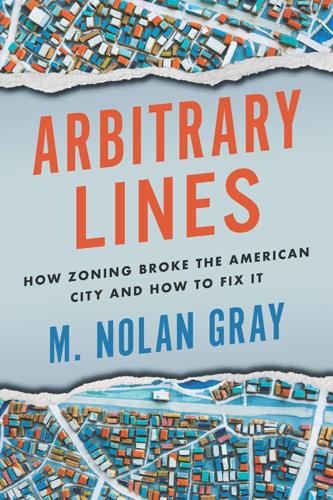
Arbitrary Lines: How Zoning Broke the American City and How to Fix It
by
M. Nolan Gray
Published 20 Jun 2022
According to the Dallas Federal Reserve, Houston is undergoing a wave of gentrification, with incomes surging in historically low-income neighborhoods near downtown.16 In response, back in 2018, the Houston City Council granted the Houston Community Land Trust an initial endowment of $1 million with a goal of building or converting 1,100 trust homes within five years.17 Working in conjunction with the Houston Land Bank—tasked with managing vacant, abandoned, and dilapidated properties—development is already under way: as of 2020, the Houston CLT has developed 21 homes at a median sale price of $75,000, well below the citywide median of $240,000. If they can pull it off, and eventually scale up the program, Houston might once again serve as a model for centering equity in a post-zoning city.
…
To their great credit, the current generation of Houston planners are busy undertaking many of the ideas discussed in the next chapter: the city is making major investments in transit, has adopted ambitious bicycle and open space plans, and is working to establish what could soon be the largest land bank in the nation. CHAPTER 10: PLANNING AFTER ZONING 1. Thomas Campanella, “Jane Jacobs and the Death and Life of American Planning,” Places Journal (April 2011), https://placesjournal.org/article/jane-jacobs-and-the-death-and-life-of-american-planning/?cn-reloaded=1. 2. The author speaks from experience. 3.
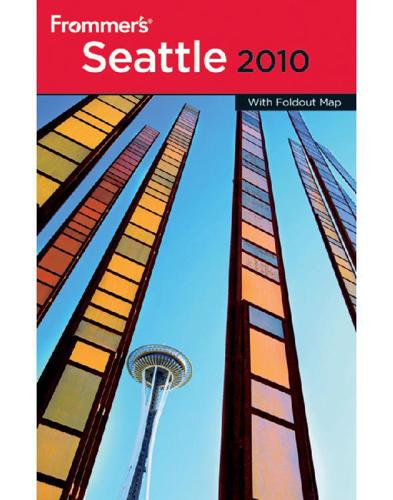
Frommer's Seattle 2010
by
Karl Samson
Published 10 Mar 2010
Saving the San Juans The San Juans are so beautiful that they have for some time been on the verge of being loved to death. However, one local organization is doing what it can to preserve the character of the islands. The San Juan County Land Bank ( 36 0/378-4402;www.sjclandbank.org) has been responsible for the acquisition of some of my favorite public open spaces here in the islands. Almost every year the land bank opens new parcels of land to the public, so be sure to check with them to see what new and as-yet-undiscovered green spaces are there to be discovered. Where to Stay Edenwild Inn This modern Victorian country inn, located right in Lopez Village, is a good choice if you’ve come here to bike or want to use your car as little as possible.
…
A little farther south is Lime Kiln Point State Park (36 0/378-2044;www.parks.wa.gov), the country’s first whale-watching park and a great place to spot these gentle giants in summer. This latter park is open daily from 8am to dusk. Flanking the state park are Deadman Bay Preserve and Lime Kiln Preserve, two properties acquired for public use by the San Juan County Land Bank. Together the state park and the two preserves have more than 3 miles of hiking trails, making this the best hiking area on the island. South of Deadman Bay Preserve, you can also access the shore at the Westside Scenic Preserve. As Westside Road moves inland, a left onto Wold Road will bring you to Pelindaba Lavender Farms, 33 Hawthorne Lane ( 86 6/819-1911 or 36 0/378-4248; www.pelindaba.com).
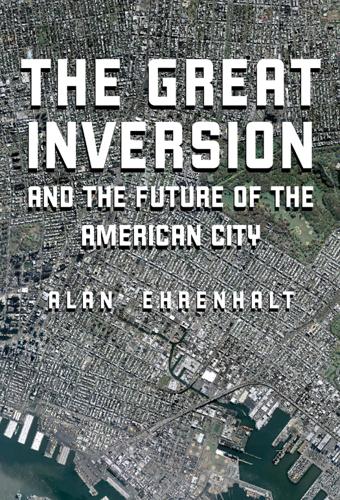
The Great Inversion and the Future of the American City
by
Alan Ehrenhalt
Published 23 Apr 2012
There aren’t many tools left for communities to protect themselves.” At the start of the last decade, the Third Ward as a whole had a population of slightly more than fifteen thousand, of whom roughly twelve thousand were black and about one thousand were white. But Coleman has not focused his land banking on the entire ward—he’s focused on the northern sections, represented most clearly by census tract 3123, concentrated north of Alabama Street. In 2000, census tract 3123 was still almost exclusively black—2,088 African Americans to only 67 white residents. Data from American Community Survey reports toward the end of the decade showed a considerable increase in the white population.
…
They can, to all intents and purposes, just show up and start digging. The ease of building on small lots next to properties with radically different uses is what led to the accelerated population changes in the Fourth Ward in the 1990s. The Third Ward would have seen essentially the same process except for the amount of land banking that has taken place. Indeed, the southern parts of the Third Ward, closest to Houston’s Museum District and to Texas Southern University, have seen a substantial transformation in the years since 2000. And over the course of a decade, without much attention being paid to it, central Houston in general has lost most of its white working class.
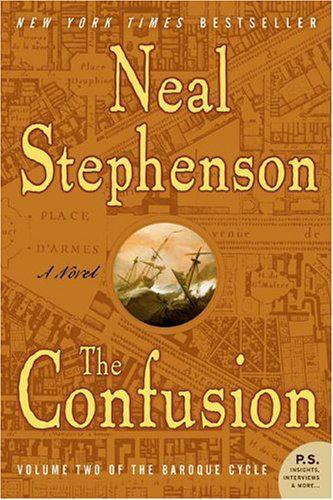
The confusion
by
Neal Stephenson
Published 13 Apr 2004
At the moment, one of these—” he held up the Land Bank notes “—buys rather a lot of these.” He indicated the Bank of England notes. “For many are of the view that the Bank of England has failed already, and the Land Bank is ascendant.” “Which amounts to saying that the Juncto will be cast down in the next election, and Harley will lead the Tories to victory.” “I dare not disagree—as much as I’d like it otherwise.” “Then I shall buy a few of these, in exchange for a Bill of Exchange, denominated in thalers, and payable at the House of the Golden Mercury in Leipzig,” said Eliza, indicating the Land Bank notes, “but I shall exchange them immediately for a lot of these.”
…
“Even by Barock standards, the most vulgar thing I’ve seen,” Eliza pronounced it. BANK OF ENGLAND, it said; and below that was printed a florid and verbose assertion that it—which is to say, this piece of paper—was money. The bills on Daniel’s opposite hand said LAND BANK and supported like claims—if anything, even more pompous. “Whig,” said Daniel, shaking the BANK OF ENGLAND bills, “and Tory,” shaking the LAND BANK bills. “You even have different money!?” “The Bank of England was, as you must know, set up two years ago by the Juncto after it won the election. It is backed—these bills are backed—by the ability of the government to raise money from taxes, lotteries, annuities, and whatever other schemes the big brains of the Juncto can think up.
…
Now, I tried to fix up your silver mines—that didn’t work because of sabotage, and because we had to compete against Indian slave labor in Mexico. I am sorry it failed. So then I went to Italy and set everything up so that you might, Parliament willing, become the next Queen of England. According to the Tories who are running the Land Bank, the value of that country is 600 million livres tournoises. They are selling grain and importing gold at a terrific clip. There is money there, in other words—not an infinite amount, but enough to pay for a few arithmetickal engines.” “Not only does Parliament have to vote on it, but also lots of people have to die in the right order, before I can be Queen of England.

Inflated: How Money and Debt Built the American Dream
by
R. Christopher Whalen
Published 7 Dec 2010
He divides the Great Depression into five phases, which he sadly also labels “during my administration,” taking personal responsibility for the terrible events of those early years of the 1930s: October 1929 to April 1931: Liquidation of Stock-Exchange Loans April to August 1931: The Panic in Austria and Germany, Exchange and Gold August to November 1931: The Effects of the British Collapse November 1931 to July 1932: Reconstruction Finance Corporation, Expanding the Land Banks, Creating the Home Loan Banks September 1932 to March 1933: Attempts to Cooperate with Roosevelt After Defeat, Refusal of Roosevelt to Cooperate on Economic Conference or War Debts After his chronicle of the years up to the start of FDRs presidency, the second half of volume two of President Hoover’s memoir is a scathing critique of his successor.
…
Indeed, the percentage increase in government spending under Hoover was larger than during the first two terms under FDR, at least until the start of WWII.38 While Hoover may not have been afraid to expand the role of government, FDR took the focus and tone of the federal government to a new level of interference with and active oversight of business. Taking a direct example from fascist Italy, the American government created and expanded the new players in our tale of money and debt—namely the government sponsored enterprise (GSE). FDR added to the list of GSEs left over from WWI, including the War Finance Corp (WFC), the Federal Land Bank, and the Sugar Equalization Board, and expanded the powers of the RFC. Everything from export finance to financing for farm exports to residential mortgages was provided through new or expanded government agencies. The housing agency Fannie Mae was created in 1938 in the second part of FDR’s New Deal economic plan, one of many “temporary” Depression-era GSEs that became permanent fixtures in Washington.
…
Durant, William Durant‘s Folly Earning power, assets (relationship, absence) Ebeling, Richard Eccles, Marriner Glass, opposition pushing on a string Truman anger Economic depression (1882-1884) Economic expansion, Burns limitation Economic growth, generation Economic output, WWI decline Economic Recovery Tax Act (1981) Economic Stabilization Act Economic stagnation, Nixon response Economy, American uncertainty/doubt Economy (angst), American political class (response) Einhorn, David Einstein, Albert Eisenhower, Dwight David defense industrial complex warning election Electrification, impact Embargos, removal (FDR support) Emergency Banking Act (1933) Emergency Banking Relief Act Employment Act (1946) passage Employment maximum, promotion Energy costs, impact Equity markets, decline Erie Railroad collapse control, theft Eurodollars deposits, dollar supply (visibility) Europe American imports, decline collapse credit, U.S. dependence deflation goods flow, American dependence unemployment (1873) WWI debt payment, failure/refusal WWII loans WWI loans European imports, WWI financing requirement European nations, U.S. trade deficit European style corporate statism, American version (FDR endorsement) European Union crisis (2010) emergence success Exchange medium Exchange Stabilization Fund (ESF) (1933) Executive Branch, power (growth) External deficits, increase (impact) Faris, Ralph Farley, James Farm cooperatives, formation Farm Credit Banks, usage Farmer’s Exchange Bank, failure Farm prices/wages, decline (continuation) Farm sector, commodity prices (collapse) Faulkner, Harold Federal debt (1945-1996) level (1974) shrinkage U.S. government servicing Federal deposit insurance, FDR support Federal Deposit Insurance Corporation (FDIC) idea, proposal panic role permanency Federal expenditures, Hoover avoidance Federal funds rate, increase Federal government greenback issuance, legality (debate) laissez faire role, return post-Civil War debt size (increase), FDR (impact) Federal Home Loan Bank Board, authorization Federal Home Loan Banks (FHLBs) authorization Hoover creation Federal Home Loan Mortgage Corporation (FHLMC) Federal insurance, access Federal Land Bank Federal Monetary Authority Federal National Mortgage Association (FNMA) creation Federal Open Market Committee (FOMC) capitulation federal funds rate, increase interest rate control Federal outlays (1968-1976) Federal outlays (1979-1988) Federal receipts (1929-1996) Federal Reserve Act (1913) amendment, banking lobby (impact) approval Bryan support compromise decentralized features evolution impact passage Byrd perspective political equation, shift Federal Reserve banks, National Monetary Commission organization Federal Reserve Money Federal Reserve System Board of Governors creation, McFadden Act (impact) original composition corportivist reform creation impact Jefferson/Jackson, cautionary views (confirmation) deflationary tone Durant complaints evolution Galbraith description High Tide imperfections independence, retention liquidity provider motivation (2000s) policies, questions rediscounting regulation changes, Warburg opposition RFC, relationship tunnel-vision policies, adoption warrants, purchase (Federal Reserve Act limitation) WWI actions Federal revenues, growth Federal spending, increase Federal Trade Act Fed of New York, discount rate (reduction) Feinberg, Robert Fessenden, William P.
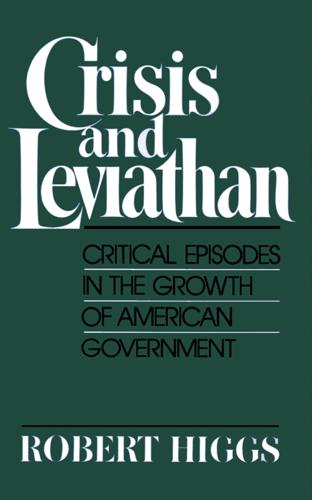
Crisis and Leviathan: Critical Episodes in the Growth of American Government
by
Robert Higgs
and
Arthur A. Ekirch, Jr.
Published 15 Jan 1987
Unfortunately, as Lester Chandler has observed, the President "seems to have paid little attention to wage rates as a determinant of costs of production." 11 Hoover backed various measures to stimulate federal spending and extensions of the government's credit, including increased appropriations for public works and the Federal Land Banks, creation of the Agricultural Credit Banks and the Home Loan Banks, liberalization of the Federal Reserve Banks' lending authority by the Glass-Steagall Act of 1932, and passage of the Emergency Relief and Construction Act of 1932, which allowed the federal government to give (officially, to lend) the state governments funds to use for relief of the unemployed.
…
To make absolutely certain that it would be perceived as an emergency measure, the legislators employed the word three times in the official title alone: "An Act To relieve the existing national economic emergency by increasing agricultural purchasing power, to raise revenue for extraordinary expenses incurred by reason of such emergency, to provide emergency relief with respect to agricultural indebtedness, to provide for the orderly liquidation of joint-stock land banks, and for other purposes."39 The statute's first section declared an emergency, which it described as "in part the consequence of a severe and increasing disparity between the prices of agricultural and other commodities." Depressed conditions in agriculture had "affected transactions in agricultural commodities with a national public interest," asserted the preamble.
…
See also Marshall Plan Everybody's magazine, 111 Ex parte Milligan, 183 Externalities, 9-10, 18,258 Fair Labor Standards Act, 190-191 Farmers, 81-82, 162, 174-177,208,210 Farmers' Alliances, 97 Farmers Union, 125 Fascism, 211, 240-242, 256-257 Federal Communications Commission, 7-8 Federal Control Act, 146 Federal Emergency Administration of Public Works, 178 Federal Emergency Relief Administration, 25, 190 Federal Energy Administration, 253 Federal Energy Office, 253 Federal Farm Board, 175 Federal Land Banks, 164 Federal Reserve Board, 142 Federal Reserve System, 107-108, 121, 206, 260 Federal Trade Commission, 7, 161 Federal Trade Commission Act, 111 Fellner, William, 240 Field, Stephen J., 101, 103 First New Deal, 189-190, 192. See also Great Depression; Roosevelt, Franklin Delano First War Powers Act, 205-206 Fiscal illusion, 65.
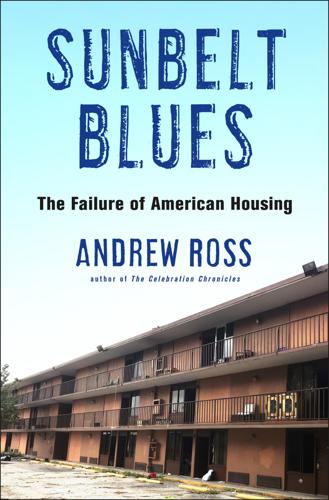
Sunbelt Blues: The Failure of American Housing
by
Andrew Ross
Published 25 Oct 2021
Yet there is no public expectation that Disney should help house the humans who don Mickey Mouse’s costume every day, or that Walmart should provide accommodation, or even a housing allowance, for the millions of its warehouse and store workers. Disney could easily make some of its large parcels of surplus land available for housing, either for its own workers or for others who need it. In Osceola, the company’s land bank includes an undeveloped section of Celebration west of I-4, in a location that would be a short commute for its employees. In 2018, Disney purchased the 965-acre BK Ranch, just southeast of Celebration, which is already zoned for a mixed-use development of three thousand homes.37 Offering some of that land would go a long way toward improving the company’s shabby record of contributions to local housing needs.
…
(It doesn’t help that many of them maintain a career in real estate development and sales, and so have a professional interest in protecting the private sector’s monopoly on housing.) Custom builder Karl Theobald, a leading local proponent of affordable housing, worked with an area realtor to set up the legal structure for a community land trust in Osceola, but it has not yet been put to use. “We go to the county’s inventory every year, but what it has in its land bank is useless,” he explains. “Pieces get donated to them, or they take ones that are left over, but these are all little splinters, and there’s not enough that’s usable.” As for the motels on 192, the case for converting them into affordable apartment units is as strong as anywhere in the country.
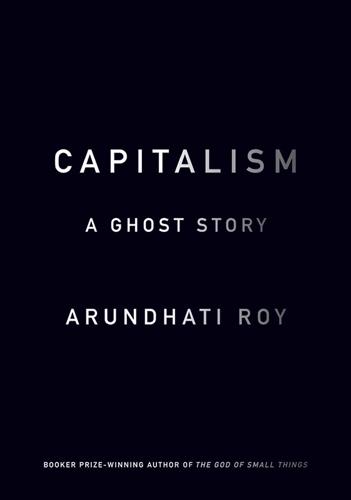
Capitalism: A Ghost Story
by
Arundhati Roy
Published 5 May 2014
India’s new megacorporations, Tatas, Jindals, Essar, Reliance, Sterlite, are those that have managed to muscle their way to the head of the spigot that is spewing money extracted from deep inside the earth.9 It’s a dream come true for businessmen—to be able to sell what they don’t have to buy. The other major source of corporate wealth comes from their land banks. All over the world, weak, corrupt local governments have helped Wall Street brokers, agribusiness corporations, and Chinese billionaires to amass huge tracts of land. (Of course this entails commandeering water too.) In India the land of millions of people is being acquired and handed over to private corporations for “public interest”—for Special Economic Zones (SEZs), infrastructure projects, dams, highways, car manufacture, chemical hubs, and Formula One racing.10 (The sanctity of private property never applies to the poor.)

Modernising Money: Why Our Monetary System Is Broken and How It Can Be Fixed
by
Andrew Jackson (economist)
and
Ben Dyson (economist)
Published 15 Nov 2012
With the means of payment in general a poor substitute for money, the colonies continued to experiment: In 1652 John Hull set up the ‘Hull Mint’ or ‘tree’ coinage in Massachusetts. The coins produced were used until 1685 when it was removed from circulation by a British decree. In 1675 a private land bank was set up in South Carolina, issuing paper bank notes as convertible securities (collateralised by secured estates). It was however ultimately unsuccessful, because although South Carolina could create money, it failed to get it accepted for general payments.11 A private land bank was also set up in Boston in 1686, and failed for similar reasons. In 1690 the state of Massachusetts began issuing ‘Bills of Credits’. This “paper money of Massachusetts was backed only by the ‘full faith and credit’ of the government”, (Goodwin, 2003, p. 36), rather than land or some other commodity.

Cities in the Sky: The Quest to Build the World's Tallest Skyscrapers
by
Jason M. Barr
Published 13 May 2024
“Beijing Bans Buildings over 500m in Height—Skyscrapers Topping 250 Metres Also Limited, but Analysts Say Ruling Might Not Have Much Impact on Market as 180–200 Metres Is Optimal Range.” South Morning China Post, July 8, 2021. Lin, Edith. “Hong Kong Needs Artificial Islands as Land Bank to Avoid Supply Shortage in the Future, Government Says.” South China Morning Post, January 20, 2023. https://www.scmp.com/news/hong-kong/society/article/3207635/hong-kong-needs-artificial-islands-land-bank-avoid-supply-shortage-future-government-says. Liu, Crocker H., Stuart S. Rosenthal, and William C. Strange. “The Vertical City: Rent Gradients, Spatial Structure, and Agglomeration Economies.”
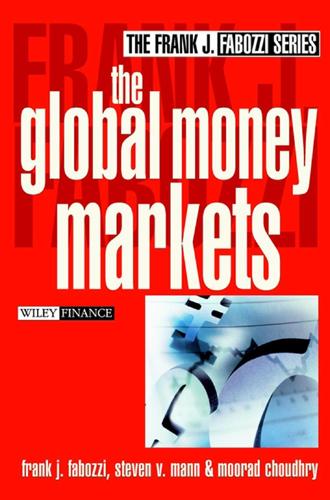
The Global Money Markets
by
Frank J. Fabozzi
,
Steven V. Mann
and
Moorad Choudhry
Published 14 Jul 2002
Its mission is to provide a steady source of low-cost credit to the U.S. agricultural sector. The FFCS lends money to farmers through a network of borrower-owned financial institutions and related service organizations. Six Farm Credit Banks and one Agricultural Credit Bank make direct long-term real estate loans to farmers through 32 Federal Land Bank Associations. The banks also provide loan funds to various credit associations, which in turn make short-, intermediate-, and long-term loans to farmers. The FFCS is regulated by the Farm Credit Administration. Unlike the agencies discussed to this point, the FFCS does not maintain a direct line of credit with the U.S.
…
See also Effective federal funds rate Federal Home Loan Bank System (FHL Bank System), 46, 57–59 discount notes, 58–59 floater, issuance, 104 Federal Home Loan Banks, 58 inverse floater, issuance, 103 Federal Home Loan Mortgage Corporation (FHLMC), 45, 53–57, 154–155, 197 CMOs, 162 dealer group, 53 discount notes, 53 Reference Bills, 54–57 auctions, 54 Federal Housing Authority (FHA), 155, 202 Federal Housing Finance Board, 58 Federal Land Bank Associations, 59 Federal National Mortgage Association (FNMA), 45, 47–53, 154–155, 197 Benchmark Bills, 47–53 CMOs, 162 discount notes, 47 Federal Open Market Committee (FOMC), 91 Federal Reserve, 219. See also New York Federal Reserve Bulletin (2001), 93 data series, 93 discontinuation. See Bankers acceptances Open Market Committee, 42 regulations, stipulations, 85 rescue.
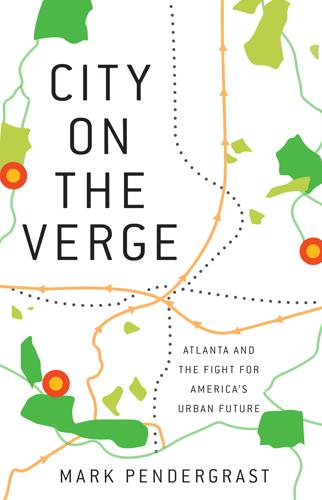
City on the Verge
by
Mark Pendergrast
Published 5 May 2017
Kasim Reed subsequently made it his personal mission to punish Warren, even sitting in the front row during a trial over squalid conditions and code violations on his properties that put him in jail briefly. Reed put the brakes on a deal in which the Blank Foundation was set to pay around $25,000 each for two dozen blighted homes owned by Warren, which would have gone to the Fulton County/City of Atlanta Land Bank Authority for resale and development. While Rick Warren’s conviction may have scared other absentee owners into making minimal improvements, it had little other impact. In December 2014, Emory University law professor Frank Alexander and a coauthor published a landmark document with an extraordinarily boring title: “Judicial in Rem Code Enforcement and Judicial in Rem Tax Sales: Optimal Tools to Combat Vacancy and Abandonment in Atlanta.”
…
For the others, the tax commissioner will eventually send out a “superpriority” Code Enforcement lien for that amount. If owners don’t pay, the property will then be offered at auction to recoup the demolition cost and any back taxes, but buyers will have to pay at least as much as all the liens. That means no one will likely purchase the property, and it will go to the Fulton County/City of Atlanta Land Bank Authority, which could transfer it to Habitat for Humanity, affordable housing programs, or the like. In this win-win scenario, properties would go back on the tax rolls, new homes would be built, and people in need would occupy them. But as this book went to press, the demolition bills had yet to go out.
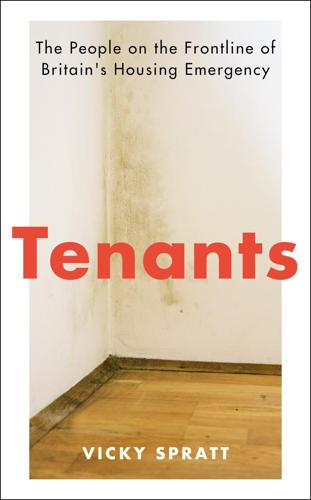
Tenants: The People on the Frontline of Britain's Housing Emergency
by
Vicky Spratt
Published 18 May 2022
And we don’t need to stop there. At the moment, it makes sense for landowners to hoard land. They can wait for it to go up in value as an area becomes desirable before they sell. Indeed, the land may be worth more sitting empty for a few years than if they built affordable homes on it. This is known as ‘land banking’ and you might think of it as a contemporary form of the enclosure that took place in Early Modern England when wealthy people took over common land so that they could charge other people to live or farm on it. You don’t need to look far to see it happening. Consider Oulton, where an investment fund bought up land and waited for it to become more desirable before redeveloping it, displacing the people who call it home in the process.
…
Act, see Addison Act Howard, Ebenezer 1 Howell, Anthony 1, 2 Hudson, Neal 1 Hughes, Amanda 1 Human City Institute 1 Human Rights Act (1988) 1 Hungary 1 Hungerford, Berkshire, 1 Hunters estate agents 1 I immigration 1, 2, 3 HMOs and 1, 2, 3 ‘hostile environment’ 1, 2 housing market and 1 migrant workers 1, 2, 3, 4, 5 ‘shadow rented sector’ and 1, 2, 3 Immigration Act (2014) 1 Immigration and Asylum Act (1999) 1 In Defense of Housing (Madden & Marcuse) 1 income 1 Independent 1 India 1 Industrial Revolution 1 Inside Housing magazine 1, 2 Institute for Fiscal Studies 1, 2 Institute for Public Policy Research (IPPR) 1, 2 Intergenerational Foundation 1 intergenerational inequality, see generations ‘intermediate housing’ 1 International Covenant on Economic, Social and Cultural Rights (ICESR) 1 investment funds 1 i Paper (newspaper) 1 Ipsos MORI 1 Ireland, see Northern Ireland; Republic of Ireland Italy 1 J Jackson-Stops estate agency 1 Jenrick, Robert 1, 2 Johnson, Boris 1, 2, 3, 4, 5, 6, 7, 8, 9 Johnson, Paul 1 Joint Council for the Welfare of Immigrants (JCWI) 1 Jones, Carwyn 1 Jones, Colin 1 Joseph Rowntree Foundation (JRF) 1, 2 journalism 1, 2 K Kaakinen, Juha 1, 2, 3 key workers 1, 2, 3, 4 Khan, Sadiq 1, 2, 3 Kimbro, Rachel Tolbert, 1 King Jr, Martin Luther 1 Kinleigh Folkard & Hayward 1 Kohl, Sebastian 1 Kondo, Marie 1 L Labour Party 1, 2, 3, 4, 5, 6, 7, 8, 9 New Labour, 1, 2, 3 Labouring Classes Dwelling Houses Act (1866) 1 Laing, R. D. 1 Lamb, Norman 1 Lammy, David 1 Lancaster 1, 2, 3 ‘land banking’ 1 Land Value Tax 1, 2 Landbay (mortgage lender) 1 Landlord and Tenant Act (1985) 1 landlord licensing 1 Landmark Chambers 1 landowners 1, 2 Latin Elephant (charity) 1 Law of Property Act (1925) 1 Law Society 1 leasehold reform 1 Leeds 1, 2 Leeds Federation of Municipal Tenants Associations 1 Lees, Loretta 1, 2, 3, 4 Leese, Richard 1 Legal & General 1 Legal Action Group (LAG) 1 legal aid 1 Legal Aid Agency (LAA) 1 Legal Aid, Sentencing and Punishment of Offenders Act (2012) 1 Lendlease (real estate investment group) 1 Letchworth, Hertfordshire 1 letting agents 1, 2 letting fees 1, 2, 3, 4 ‘levelling up’ 1, 2 LGBTQ+ 1, 2 discrimination 1 Liberal Democrat Party, 1, 2 Lincoln, Abraham 1 Live-In Guardians (property management company) 1 Liverpool 1 Lloyd George, David 1, 2, 3, 4 Lloyd, Toby 1 Loach, Ken 1 local authorities 1, 2, 3, 4, 5, 6, 7, 8, 9 Local Government Association (LGA) 1, 2 Local Housing Allowance (LHA) 1, 2, 3, 4, 5 Localism Act (2011) 1 Location, Location, Location (TV series) 1 location/place 1, 2 London, 1, 2, 3, 4, 5, 6, 7 gentrification and 1, 2, 3 Great Dock Strike (1889) 1 guardianship 1, 2 London Housing Panel 1 ‘London Living Rent’, 1 rent control 1, 2 rent strikes 1 London: Aspects of Change (Glass) 1 love, politics of 1 ‘low-price low-income market’ 1 Lowe Guardians (property management company) 1 Lowe, Tim 1 Luxembourg 1 M Macintosh, Kate 1 Macmillan, Harold 1 Madden, David 1, 2 Magpie Project 1 Major, John 1 Manchester 1, 2, 3, 4, 5 Marcuse, Peter 1, 2 Marx, Karl 1, 2 May, Theresa 1, 2, 3, 4, 5, 6, 7, 8, 9, 10, 11, 12 McKee, Kim 1, 2, 3, 4 McKibbin, Philip 1 mental health 1, 2, 3, 4 Merkel, Angela 1 Milanović, Branko 1 Mill, John Stuart 1, 2 Milton Keynes 1, 2 Ministry of Housing, Communities and Local Government (MHCLG) 1, 2 mortgages 1, 2, 3, 4, 5, 6, 7, 8, 9, 10 ‘buy-to-let’ 1, 2, 3, 4 interest rates 1, 2, 3 mortgage interest relief 1 Mulheirn, Ian 1 Munday, Becky 1 Murie, Alan 1 N NatCen Social Research 1 National Audit Office (NAO) 1 National Coal Board (NCB) 1 National Conversation on Immigration 1 National Housing Federation 1 National Insurance 1, 2 National Landlords Association 1 National Referral Mechanism (NRM) 1 National Residential Landlords Association (NRLA) 1, 2 Nationwide house price index 1 Ncube, Timon 1 Neate, Polly 1 Netherlands 1, 2, 3 Newsnight (TV programme) 1, 2 Next Steps Accommodation Programme 1 NHS (National Health Service) 1, 2, 3, 4 Clinical Commissioning Groups (CCGs) 1 Nightmare Neighbour Next Door, The (TV documentary series) 1 No Recourse to Public Funds (NRPF) 1, 2 ‘non-decent’ homes 1 Norman Shaw South Building, Westminster 1, 2 North Somerset 1, 2 Northern Ireland 1, 2, 3 Nottingham 1 Nuneaton and Bedworth, 1 Nussbaum, Martha 1 O Observer 1 Office for National Statistics (ONS) 1, 2 OfGem 1 Old Rectory, Colchester 1, 2 ‘ontological security’ 1 Orbán, Viktor 1 Organisation for Economic Co-operation and Development (OECD) 1 Orwell, George 1, 2, 3 Osborne, George 1, 2, 3, 4, 5 Oulton, West Yorkshire 1, 2, 3, 4 out-of-borough housing placements 1 Overton Window 1 Overton, Joseph 1 P Palmer, Henry 1, 2 Paragon (mortgage lender) 1 Paris, France 1 Pathfinder programme (Scotland) 1 Peaker, Giles 1, 2, 3, 4 Peckham, London 1, 2, 3, 4, 5 Peluffo Soneyra, Santiago 1 Pemberstone Group 1 Pendle, Lancashire 1 People’s Charter (1838) 1 pets 1, 2 phenomenology 1 ‘phoenixing’ 1 Pickett, Kate 1 Piketty, Thomas 1 Pincher, Christopher 1 Piven, Frances Fox 1 Poetics of Space, The (Bachelard) 1 Policy in Practice (software company) 1 Poor People’s Movements: Why They Succeed, How They Fail (Piven & Cloward) 1 Portugal 1 poverty 1, 2, 3, 4, 5, 6, 7, 8, 9, 10 child poverty 1, 2, 3, 4, 5 poverty premium 1 ‘relative poverty’, 1 Powell, Lucy 1 Preece, Jenny 1 Pregnant Then Screwed campaign group 1 Prescott, John 1 PricewaterhouseCoopers 1 Pritchard, Rebecca 1 private developers 1, 2, 3, 4 private landlords 1, 2, 3, 4, 5, 6, 7 bad practice 1 ‘buy-to-let’ 1, 2, 3, 4, 5 complaints 1, 2 energy efficient homes 1 free market and 1 ‘friendlords’ 1 homophobia 1 Housing Benefit discrimination 1 intimidation 1, 2 landlord licensing 1, 2, 3 pets 1, 2 racial discrimination 1 repairs and maintenance 1, 2 rogue landlords 1, 2, 3, 4, 5, 6, 7 ‘shadow rented sector’ 1, 2, 3 see also guardianship; Housing Act (1988); housing standards Property Guardian Providers Association (PGPA) 1 Property Ladder (TV series) 1 property values, see house prices Protect Programme 1 protected tenancies 1 ‘psychosocial sense’ 1 public health 1, 2, 3, 4, 5 mental health 1, 2, 3, 4, 5, 6, 7 physical health 1, 2, 3, 4 see also coronavirus pandemic Public Health Act (1875) 1 Public Health England 1 Pussy Riot (musical group) 1 Pye, Janet 1 R race and ethnicity 1, 2, 3, 4 discrimination 1, 2 homelessness and 1, 2, 3 see also immigration Rachman, Peter 1, 2 ‘Rachmanism’ 1 Rashford, Marcus 1 Readman, Cindy and John 1, 2, 3 Redcar, North Yorkshire 1 Rees, Marvin 1 Reeve, Kesia 1, 2 Reeve-Lewis, Ben 1, 2 Reform Act 1832: 1, 2 1867: 1 1884: 1 Remes, Gyula 1 rent 1, 2, 3, 4 cost to household income ratio 1, 2 Local Housing Allowance (LHA) 1 low-income renters, 1, 2, 3, 4, 5, 6 rent control 1, 2, 3, 4, 5, 6, 7, 8, 9 rent rises 1 rent strikes 1 rent trap 1 unaffordable private rents 1 Rent Act (1957) 1 Rent Pressure Zones (Scotland) 1, 2, 3, 4 Rent Repayment Order (RRO) 1, 2 Rent Smart 1 Renters’ Reform Bill 1, 2, 3, 4 rentier capitalism 1 Republic of Ireland 1, 2 Residential Landlords Association 1, 2 Resolution Foundation 1, 2 Rhodes, David 1 Ricardo, David 1 Rice, Alan 1, 2, 3, 4, 5, 6 Ridley, Nicholas 1 Rigby, Mandy 1 Right to Buy scheme, see social housing ‘right to housing’ 1 Right to Rent scheme 1 Road to Wigan Pier, The (Orwell) 1, 2 Rogers, Will 1 rogue landlords, see private landlords Room of One’s Own, A (Woolf) 1 ‘root shock’ 1 Rousseau, Jean-Jacques 1, 2 Rowntree, Joseph 1 Roy, Arundhati 1 Royal Institute of British Architects (RIBA) 1, 2 Rugg, Julie 1, 2 S Sà, Filipa 1 Safer Renting 1, 2, 3 Safer Renting: Journeys in the Shadow Private Rented Sector (Reeve-Lewis) 1 Saltney, Wales 1 Sassen, Saskia 1, 2 Scientific Advisory Group for Emergencies (SAGE) 1 Scotland 1, 2, 3, 4, 5, 6, 7, 8 Section 21 evictions, see evictions secure tenancies 1 Seifert, Richard 1 Seychelles 1 ‘shadow rented sector’ 1, 2 Shared Ownership scheme 1, 2 Sheen, Kelly 1 Sheen, Morgan 1, 2 Shelter (homeless charity) 1, 2, 3, 4, 5, 6, 7, 8, 9, 10, 11, 12, 13, 14, 15, 16 Shnapp, Sophie 1 Shrubsole, Guy 1 single mothers 1 Skelton, Noel 1 slavery 1, 2, 3 Slavery Abolition Act (1833) 1 slum housing 1, 2, 3, 4, 5, 6, 7 Smith, Adam 1, 2 Smith, David 1 Smith, Paul 1 social care cap (2021) 1 social class 1, 2, 3, 4 social inequality 1, 2 middle-classes 1, 2, 3, 4, 5, 6, 7, 8, 9 social mobility 1, 2 class divide 1 working classes 1, 2, 3 social housing 1, 2, 3, 4, 5, 6, 7, 8, 9, 10, 11, 12, 13, 14, 15 housing standards, 1 in the 1950s 1 ‘priority need’ 1 public health and 1 Right to Buy scheme 1, 2, 3, 4, 5, 6, 7, 8, 9 state-subsidised housing 1 social media 1 social status 1 Somerset Live 1 South Africa 1 South East Guardians (property management company) 1 Southwark Council 1 Sovereign housing association 1, 2 Spanish Flu pandemic (1918–19) 1 Spectator 1 Spencer, Roz 1 Spirit Level, The (Pickett & Wilkinson) 1 squatters 1 Stamp Duty 1, 2, 3 Starmer, Keir 1, 2, 3 Stepney Tenants’ Defence League 1 Stevenage, Hertfordshire 1 Stokes Croft, Bristol 1 Stokes Croft Land Trust (SCLT) 1 Strang, Jim 1 Stratton, Allegra 1 Sugar Hill Close and Wordsworth Drive housing estate, Oulton 1, 2 Sunak, Rishi 1 Sunday Times Best Places to Live in the UK guide 1 Rich List 1 Sutton Trust, 1 Switzerland 1 Syrop, Helen 1, 2, 3, 4, 5 T Tagore, Rabindranath 1 taxation 1 temporary accommodation 1, 2, 3, 4, 5, 6 Tenant Fees Act (2019) 1, 2, 3, 4, 5 tenants 1, 2 deposits 1, 2, 3, 4, 5 letting fees 1, 2, 3, 4 protected tenancies 1 rent strikes 1 repairs and maintenance 1, 2 rights 1, 2, 3, 4, 5 stress and 1 tenancy contracts 1 tenants’ unions 1 see also evictions; guardianship; private landlords; public health Thanet, Kent 1 Thatcher, Margaret 1, 2, 3, 4, 5, 6, 7 Thorpe, Shanene 1 Trade Union Congress (TUC) 1 trade unions 1 trafficking 1 ‘trickle-down housing’ 1 Tropicana, Weston-super-Mare 1 Tsemberis, Sam 1 Tuan, Yi-Fu 1 tuberculosis (TB) 1 Tudor Walters Report (1918) 1 Tunstall, Rebecca 1 Turning Point service, Glasgow 1 Twain, Mark 1 Two Saints (homelessness support group) 1 U UKIP (UK Independence Party) 1 United Nations (UN) 1 United Tenants’ Association 1 Universal Basic Income 1, 2 Universal Credit 1, 2 University of Granada, Spain 1 urban regeneration 1, 2 Urban Studies journal 1 Uruguay 1 V Valuations Office Agency (VOA) 1 Vasudevan, Alexander 1 ‘Vent Your Rent’ campaign 1, 2 Voices of Bristol: Gentrification and Us (Palmer) 1 W Wales 1, 2, 3, 4 Walters, John Tudor 1, 2 Warm Homes Nest scheme (Wales) 1 Watchtower Security Solutions Ltd 1 wealth 1, 2, 3 Wealth of Nations, The (Smith), 1 welfare benefits 1 welfare state 1, 2, 3 Westminster, London 1 Weston Housing Action 1 Weston-super-Mare, North Somerset, 1, 2 Who Owns England?
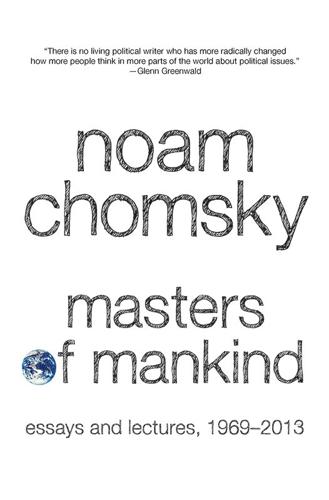
Masters of Mankind
by
Noam Chomsky
Published 1 Sep 2014
There is no evidence that this trend has at all changed in the last eight years. It may even be outpacing the minuscule efforts at land reform. . . . Will the Congress in Manila, composed of the very same rural banking elite, ever vote the necessary funds to finance the Agricultural Credit Administration, the Land Bank and Cooperatives?44 The report may have gone on to indicate that this situation is, largely, a consequence of American colonial policy, and it also might have ventured a prediction as to the fate of those driven off the land under “rationalization” in a country that has been described as an American vegetable garden.
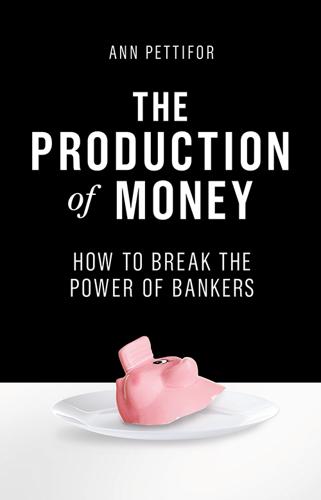
The Production of Money: How to Break the Power of Banks
by
Ann Pettifor
Published 27 Mar 2017
While he is remembered (and vilified) for both a colourful private life and events that spun out of his control in France in 1720, he had a much better understanding of money than his much-celebrated fellow countryman Adam Smith. Law’s books Money and Trade: With a Proposal for Supplying the Nation with Money (1705) and Essay on a Land Bank (1720) paved the way for the advanced monetary systems in place today.4 Presidents Thomas Jefferson (1743–1826) and Abraham Lincoln (1809–61) also understood the money system and had a healthy fear of Wall Street or what Lincoln called ‘the money power’. But, like Keynes, Schumpeter, Minsky and Galbraith, they struggled to share their understanding of credit and money with their colleagues in the economics profession.

Marxian Economic Theory
by
Meghnad Desai
Published 20 May 2013
The American Civil War is another example (once again rather simplified) of a confrontation between industrial capitalism of the North and the feudal South'. Another element is the transformation of comnercial and merchant capitalists into industrial capitalists. This transformation is facilitated by a variety of institutional and legal forms, e.g. financial institutions such as Land Banks or State Industrial Banks, reforms involving confiscation of fOreign capital or land-holdings. In different countries, particular events have dictated the combination of these various forms which have led to the concentration of means of production in the hands of the capit_lists. lO It needs to be kept in mind constantly that while a model of capitalism with two antagonistic classes is at the heart of Marxian economics, in any particular historical (concrete) situation, one has to take into account many classes.

Why We Can't Afford the Rich
by
Andrew Sayer
Published 6 Nov 2014
Because credit was easy to get, buyers could pay more for housing, and so house prices did rise – encouraging still more lending, on the grounds that the collateral was an appreciating asset. As long as house prices rose faster than the rate of interest, buyers were winning. Rising prices produce little response from house-builders in terms of increasing the supply of housing because they want to avoid risking a fall in prices and rents. They accumulate ‘land banks’, but they only build on these when the prospective profits are highest, thereby creating artificial scarcity.107 They can make more money from building and selling a few houses while prices rise than from building many and risking a lower price. Planning restrictions on new developments can also help to maintain this scarcity.
…
First, speculation in property markets. Property developers typically buy up plots close to city centres, in the hope of converting them to a new use, usually commercial and office development, that will allow higher rents to be charged than for the present uses. As we’ve seen, they tend to accumulate plots as ‘land banks’ and postpone development until prices are rising. In the meantime, the existing buildings are usually left to decline, producing the typically decaying environments of our inner cities, with all the social costs that go with them. In this case, far from the speculation causing an increase in supply, it holds it back.

Celebrating the Third Place: Inspiring Stories About the Great Good Places at the Heart of Our Communities
by
Ray Oldenburg
Published 30 Nov 2001
At the city’s public TIF hearings, UIC administrators used the same rhetoric that it has always used against people who try to preserve third places. They said coalition members were “anti-development,” wanting to “hold back job creation,” and were “absolutely insane.” None of them mentioned the hundreds of jobs, businesses, and property tax revenue that had disappeared as a result of UIC’s land banking. The city read off a long list of community organizations that supported South Campus expansion. Every one of these groups did business with the city or UIC. The TIF was pushed through the city council without any dissent. Six years after demolition of most of the neighborhood, nothing has been built except for some perpetually empty parking lots and a few ball fields, which are the minimum structures that the city code requires for a public institution to build on vacant land.
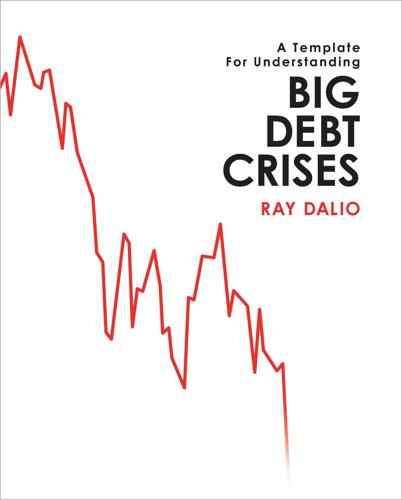
Big Debt Crises
by
Ray Dalio
Published 9 Sep 2018
The funds came from the banks and totaled $500 million, with the ability to borrow another billion.132 At the same time, Hoover was looking for solutions for the collapsing real estate market. To stop foreclosures on mortgages of “the homes and farms of responsible people,” he sought to create a system of Home Loan Discount Banks, which he did in 1932. In the meantime, he worked with both the insurance and real estate agencies to suspend foreclosures on farm loans by the Federal Land Banks, while providing the institution with $1 billion so that it could expand its lending.133 The policies were well received and broadly inspired confidence among investors. The stock market rallied in response, up 35 percent from its October bottom to November 9, with a jump of more than 10 percent on the day the National Credit Association was announced.
…
–Federal Reserve Bulletin November 1, 1931 Hoover Gives $2,500 to Fund to Assist the Idle of District (NYT) “President Hoover gave $2,500 today toward District of Columbia unemployment relief. E.C. Graham, chairman of the city’s employment committee, was notified of the donation by a telephone call from Lawrence Richey.” –New York Times November 3, 1931 Propose to Hoover Home Credits Plan; Building and Loan League Men Suggest Federal Land Bank Aid to Their Societies –New York Times November 4, 1931 Realty Credit Aid Studied by Hoover; President Confers with Glass on Bank System to Rediscount Urban Mortgages –New York Times November 5, 1931 Bennett Approves Hoover Credit Plan; Opinion to Broderick Says It Is Legal for State Banks to Participate in Pool “Banks under the supervision of the State Banking Department may use funds legally to participate in the plan of the National Credit Corporation, which was founded at the suggestion of President Hoover to stabilize the financial situation, according to an opinion rendered yesterday by Attorney General John J.
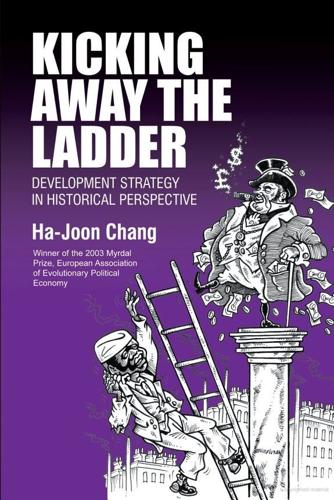
Kicking Awaythe Ladder
by
Ha-Joon Chang
Published 4 Sep 2000
Under Napoleon III, the French state actively encouraged infrastructural developments and established various institutions of research and teaching. It also contributed to the modernization of the country's financial sector by granting limited liability to, investment in and overseeing of modern, large-scale financial institutions like Credit Mobilier, Credit Fonder (the Land Bank) and Credit Lyonnais.u3 On the trade policy front, Napoleon III signed the famous Anglo-French trade treaty (the Cobden-Chevalier treaty) of 1860, which reduced French tariffs quite substantially and heralded a period of trade liberalism on the Continent that lasted until 1879.134 However, as we can see from Table 2.2, the degree of protectionism in France was already quite low on the eve of the treaty (lower than in Britain at the time), and therefore the reduction in protectionism that resulted from this treaty was relatively minor.

Home: Why Public Housing Is the Answer
by
Eoin Ó Broin
Published 5 May 2019
The Planning and Development Act 2000 obliged Local Authorities to develop six-year development plans to better coordinate all aspects of their administrative areas’ development, including proper zoning and planning. The 2000 Act also introduced the regulations governing Strategic Development Zones which were an attempt both to allow for more integrated master-planning of large, important public and private land banks while at the same time streamlining and fast-tracking the planning and decision-making – two objectives that do not always sit easily together. The most notable Strategic Development Zones have been those in Dublin’s Docklands and Adamstown in the west of the city. While the former has been heavily criticised for its social cleansing of the local working-class communities surrounding Sheriff Street to make way for more upmarket residential development, the latter has emerged, recession delays notwithstanding, as an example of better planning and more integrated residential and social-economic development.
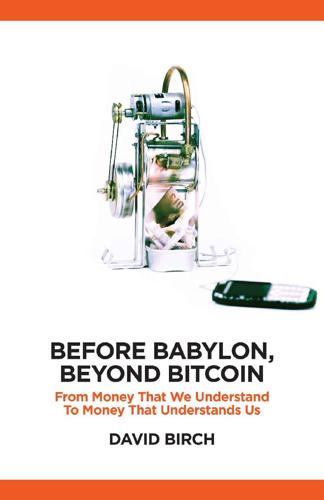
Before Babylon, Beyond Bitcoin: From Money That We Understand to Money That Understands Us (Perspectives)
by
David Birch
Published 14 Jun 2017
Around the same time as the technology of paper money was rebooted, the last great monetary innovation of the pre-modern age, central banking, arose around the coffee houses of Amsterdam. What were they smoking? But the idea spread, and in 1692 the Bank of England was created for the admirable purpose of financing wars against France. France, incidentally, went on to become the source of all sorts of crazy money experiments that ended in disaster: the assignats, John Law’s land bank, the Latin Monetary Union and … the euro. The past begins with money as debt in commodities and then a commodity (anything from grain to seashells to gold) or a claim on such. The agricultural revolution led to the rise of cities and the dawn of banking and, eventually, to coins. Stretching from antiquity to early modern times, the technological implementations went from cuneiform to banknotes to printed cheques.
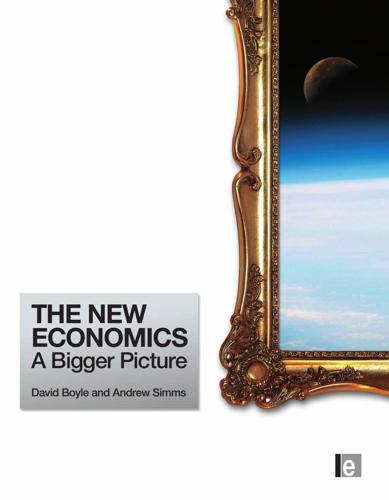
The New Economics: A Bigger Picture
by
David Boyle
and
Andrew Simms
Published 14 Jun 2009
Like other owner–occupiers, mutual homeowners will have the opportunity to invest in their home and the incentive to look after and improve it. At the same time, the land can be held in trust for the benefit of future generations and the community as a whole. Successful examples already exist but there is now a role of more ambitious community land banks that would create scope to find a match with new municipal bonds or other forms of targeted, low-interest capital. 11 Take a ‘social investment approach’ to public services, measure and reward broader value creation Unprecedented investment in banking stability has been justified on the lines that the cost of doing nothing would be far greater.
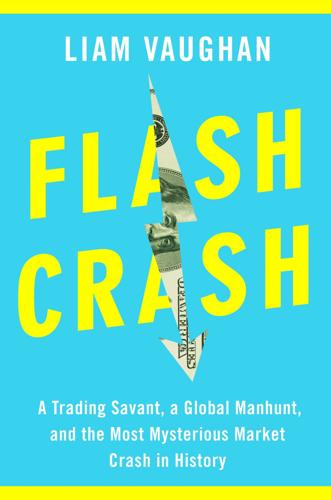
Flash Crash: A Trading Savant, a Global Manhunt, and the Most Mysterious Market Crash in History
by
Liam Vaughan
Published 11 May 2020
Not all residents were happy at the prospect of having their countryside blighted by armies of ninety-foot structures, but MacKinnon and Dupont had a contact in Edinburgh they said was uniquely placed to unlock the country’s riches: a quantity surveyor and property developer by the name of Martin Davie, who had founded one of the first businesses to spring up in response to the government’s renewable energy pledge. Davie’s bedside manner left something to be desired—he’d reportedly brought the inhabitants of Ayrshire to tears during one consultation meeting—but he had struck an exclusivity deal with one of the country’s biggest land banks, giving him an in with a long list of farmers and landowners who were potentially amenable to hosting turbines on their property. Davie suggested he and Nav go into business. Nav would provide the capital—an initial $16 million plus a pledge to provide a further $8 million if it was needed—while Davie would run the operation day to day, identifying sites, arranging for surveys, and securing the relevant approvals.
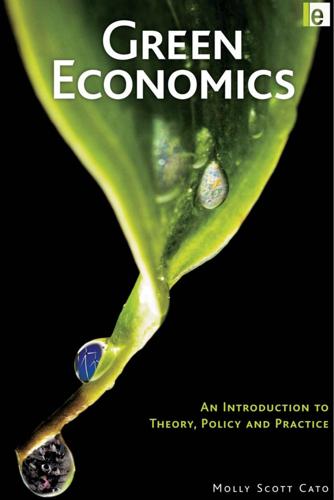
Green Economics: An Introduction to Theory, Policy and Practice
by
Molly Scott Cato
Published 16 Dec 2008
Certainly, proponents of the land tax, including Henry George, saw the rentier class, those who lived from the income their land ownership generated, as holding back economic progress. They could merely sit on their land and live a comfortable life without having to engage in useful economic activity. A similar argument is made today against the holding of land for speculative reasons, including by supermarkets with their so-called ‘land banks’.15 A land tax would require the tax to be paid on the land whether it was put to productive use or not, thus increasing the pressure for using land for economic activity. This might run counter to green thinking about limits to growth and the need for ‘de-growth’ or a reduction in levels of economic activity as measured by GDP (for more see Chapter 7).
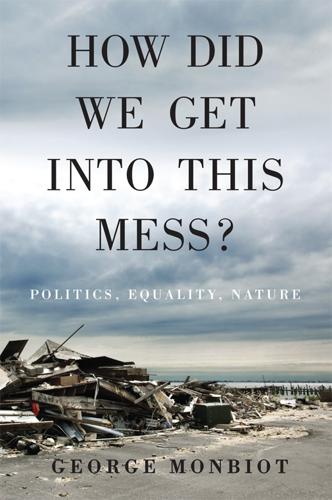
How Did We Get Into This Mess?: Politics, Equality, Nature
by
George Monbiot
Published 14 Apr 2016
Throughout the country, they become prisoners of bad design, and so do adults.5 Without safe and engaging places in which they can come together, no tribe forms. So parents must play the games that children would otherwise play among themselves, and everyone is bored to tears. The exclusion of children arises from the same pathology that denies us decent housing. In the name of market freedom, the volume house-builders, sitting on their land banks, are free to preside over speculative chaos, while we are free to buy dog kennels priced like palaces in placeless estates designed so badly that community is dead on arrival. Millions, given the chance, might want to design and build their own homes, but almost no plots are available, as the big builders have seized them.
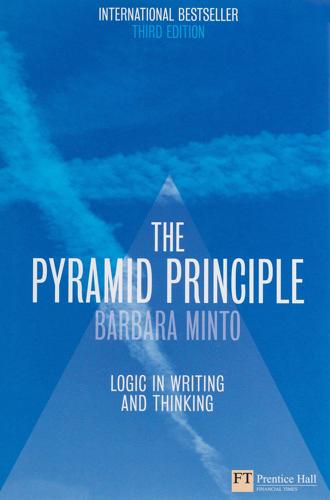
The Pyramid Principle: Logic in Writing and Thinking
by
Barbara Minto
Published 2 Jan 2010
.__ Exploit the increasing --financial sophistication of the corporate sector __ Increase financial commitment to construction industry l;·~~~;~lize on oppor;~ I ties arising through I the norma! growth of the economy Expand lending through Acceptance Credits E Finance expansion in __ building and construction Finance land banks Make financing for new house building schemes totally comprehensive --~ Capitalize on increased - - EC trade and investment 1 Participate in the growing number of overseas projects in the country Increase volume of business with subsidiaries -t_. . Pro~ide trade finance and fore1gn exchange services 159 Revealing Flaws in Grouped Ideas You can use this same technique of displaying the logical relationships between groups of activities to question the logic of what you've vvritten.
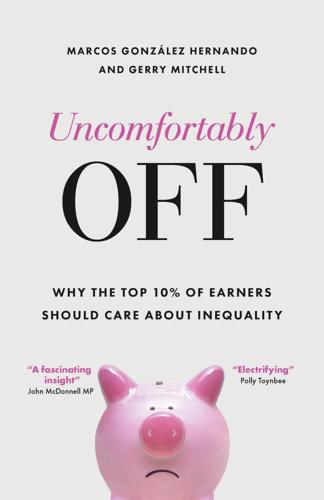
Uncomfortably Off: Why the Top 10% of Earners Should Care About Inequality
by
Marcos González Hernando
and
Gerry Mitchell
Published 23 May 2023
Britain’s broken housing market and housing crisis is in fact a land crisis, as Guy Shrubsole demonstrates in Who Owns England?: Politicians can talk all they like about building more homes, or slashing planning regulations to free up developers. But fail to tackle sky-high land prices, and all you’ll end up with is a bunch more unaffordable houses. Housing developers are often accused of land banking to bolster their profits, but in reality all landowners have a propensity to hoard land – and to demand as high a price as they can get when they come to selling it.41 Older generations have benefited from rapid rises in the value of their homes, generous occupational pension provision, decades of healthy wage growth, free university tuition when they themselves studied, tax breaks for pension saving and capital gains on main homes, and the ‘triple lock’ on the state pension.42 The young, meanwhile, spend an increasing percentage of their earnings on rent, all while real wages have stagnated.

The Democracy Project: A History, a Crisis, a Movement
by
David Graeber
Published 13 Aug 2012
Mobilizations, mass meetings, and threats of popular uprising continued. As before the Revolution, many of these protests centered on debt. After the war, there was a heated debate over what to do about the Revolutionary War debt. The popular demand was to let it inflate away into nothing and base the currency on paper notes issued by local “land banks” under public control. The Continental Congress took the opposite approach, following the advice of wealthy Philadelphia merchant Robert Morris (apparently no relation to Gouverneur) that wealthy speculators who’d bought up the debt at depreciated prices should be paid in full. This, he said, would cause wealth to flow “into the hands of those who would render it most productive”; at the same time, creating a single, central bank, on the model of the Bank of England, would allow the national debt to circulate as “new medium of commerce.”10 This system, of making government war debt the basis of the currency, was tried and true, and in a way it’s the one we still have now in the Federal Reserve—but in the early days of the republic the ramifications for simple farmers who ended up effectively having to pay the debt were catastrophic.

The Cohousing Handbook: Building a Place for Community
by
Chris Scotthanson
and
Kelly Scotthanson
Published 1 Nov 2004
Take-out loan: Private mortgages used by individuals to purchase the private residences after construction is complete. Unit pricing: The prices established for each dwelling unit in your community, adding up to the total project cost. Value: What someone else is willing to pay for a finished product or services. Vendor financing: Financing provided by the seller, typically of land. Banking Set up a relationship with a bank early in the development process. A good relationship with a bank can have long-term benefits to your group when it comes 181 182 THE COHOUSING HANDBOOK time to borrow money later. A bank with records of your group’s income and cash flow over a period of time is more likely to lend you money when you need it.
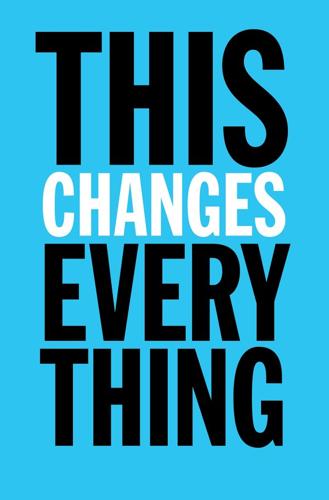
This Changes Everything: Capitalism vs. The Climate
by
Naomi Klein
Published 15 Sep 2014
Smith Jr., a former CEO and later chairman of General Motors, and E. Linn Draper Jr., formerly the CEO and chairman of American Electric Power, both served on The Nature Conservancy’s board of directors: “Past Directors of The Nature Conservancy,” Nature Conservancy, http://www.nature.org; David B. Ottaway and Joe Stephens, “Nonprofit Land Bank Amasses Billions,” Washington Post, May 4, 2003. BUSINESS COUNCIL: “Working with Companies: Business Council,” Nature Conservancy, http://www.nature.org; BOARD OF DIRECTORS: “About Us: Board of Directors,” Nature Conservancy, http://www.nature.org. 18. “Consolidated Financial Statements,” Nature Conservancy, June 30, 2012, pp. 20-21; “Consolidated Financial Statements,” Nature Conservancy, June 30, 2013, p. 21; Naomi Klein, “Time for Big Green to Go Fossil Free,” The Nation, May 1, 2013; FOOTNOTE: Mark Tercek email communication to senior managers, August 19, 2013. 19.
…
Gus Speth, “American Environmentalism at the Crossroads,” speech, Climate Ethics and Climate Equity series, Wayne Morse Center for Law and Politics, University of Oregon, April 5, 2011. 32. “Corporations,” Conservation Fund, http://www.conservationfund.org; “History,” Conservation International, http://www.conservation.org, version saved by the Internet Archive Wayback Machine on December 3, 2013, http:// web.archive.org. 33. Ottaway and Stephens, “Nonprofit Land Bank Amasses Billions”; Joe Stephens and David B. Ottaway, “Nonprofit Sells Scenic Acreage to Allies at a Loss,” Washington Post, May 6, 2003; Monte Burke, “Eco-Pragmatists; The Nature Conservancy Gets in Bed with Developers, Loggers and Oil Drillers,” Forbes, September 3, 2001. 34. “Environmentalists Disrupt Financial Districts in NYC, San Francisco,” Associated Press, April 23, 1990; Donatella Lorch, “Protesters on the Environment Tie Up Wall Street,” New York Times, April 24, 1990; Martin Mittelstaedt, “Protesters to Tackle Wall Street,” Globe and Mail, April 23, 1990. 35.
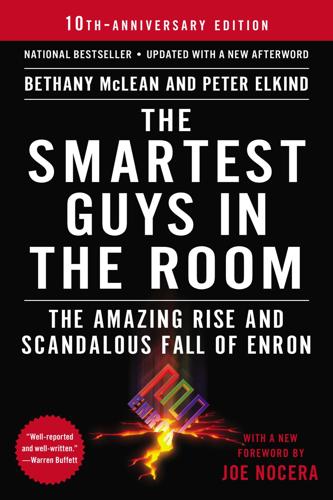
The Smartest Guys in the Room
by
Bethany McLean
Published 25 Nov 2013
But the Chinese Wall had long since broken down, and during the bull market, analysts became increasingly instrumental in helping their firms land banking business. When a company was trying to decide which investment-banking firm to choose for an IPO, for instance, analysts would accompany the bankers, and help pitch the business. More important, analysts would promise to produce favorable research on the company once it went public. Without question, an analyst who made this promise was betraying investors to help his firm land banking fees. And in the aftermath of the bull market, analysts were raked over the coals for having done so.
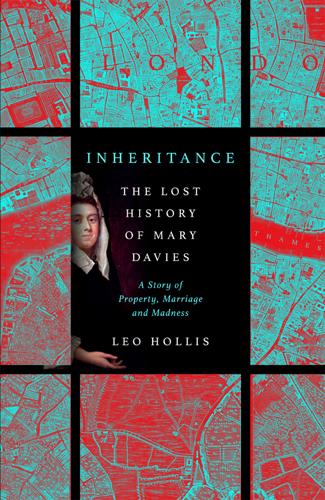
Inheritance
by
Leo Hollis
Across the bourse, an overambitious stock price was jokingly dismissed as ‘bare-bon’d’.21 The relationship between land and finance was now firmly established. Land represented not just a place to stash value but also an abstracted, futures market. This was seen in the proliferation of land-based financial instruments, the land bank and the mortgage, to finance and secure deals. * * * These machinations and financial instruments were as important to the goings-on at Millbank as within the City walls. While the Manor of Ebury was now Sir Thomas’s property, Dame Mary kept an interest in her inheritance. The couple had to continue to work with the Tregonwells, who still had interests in the widow’s third of the estate.
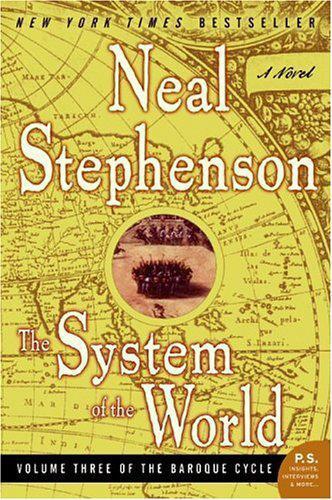
The system of the world
by
Neal Stephenson
Published 21 Sep 2004
I know that the Tories have established their own Bank, as a rival and a counterpoise to the Bank of England. But the Bank of England is capitalized with East India shares. The equity of the Tories’ Land Bank is, simply, land. And East India trade grows from year to year. But of land there is a fixed quantity, unless you mean to emulate the Dutch, and manufacture your own.” “This is where you need to be set to rights, Dr. Waterhouse. The Land Bank is an antiquarian folly, for just the reasons you have set forth. But this in no way signifies that the Bank of England holds a monopoly. On the contrary. With all due respect to the busy, but misguided men of the Juncto, their Bank’s health is as precarious as the Queen’s.
…
Whether you go right, toward Bishopsgate, or left up Pig toward Gresham’s College, you will in a few moments come to the offices of the South Sea Company, which, though it is only three years old, already spans the interval between those two ways.” “And what do you propose I should do there?” “Invest! Open an account! Align your interests!” “Is it just another Tory land bank?” “Oh, on the contrary! You are not the only one to perceive the wisdom of investing in the future increase of foreign trade!” “The South Sea Company, then, has such interests…where? South America?” “In its original conception, yes. But, as of a few months ago, its true wealth lies in Africa.”
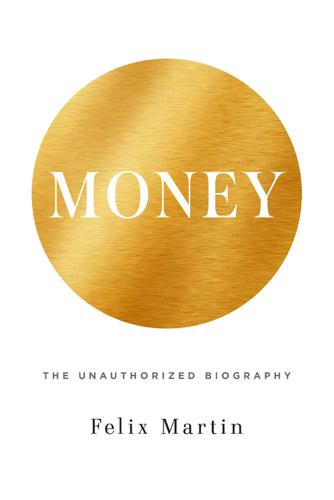
Money: The Unauthorized Biography
by
Felix Martin
Published 5 Jun 2013
The Bank of Scotland had been established in 1695, but had remained underdeveloped by comparison with the Bank of England, and in 1704 suffered a calamitous run. 3. Law, 1705. 4. Ibid., p. 100. 5. Law, 1720, p. 91. 6. Ibid. 7. See chapter 5. 8. Law, 1720, p. 94. 9. Ibid. 10. Law, 1705, p. 118. 11. Ibid. In his early works—his 1704 Essay on a Land Bank and his 1705 Money and Trade—Law advocated using land as the standard of monetary value—and it is to land that he is referring here. He believed land to be preferable to precious metals because it was understood by common people to be valuable, of limited supply (thereby imposing a limit on money issuance by the sovereign and quelling fears of overissuance), and under domestic ownership and control.

A Pelican Introduction Economics: A User's Guide
by
Ha-Joon Chang
Published 26 May 2014
(Cambridge: Cambridge University Press, 2012). B. FINE AND D. MILONAKIS From Economics Imperialism to Freakonomics: The Shifting Boundaries between Economics and the Other Social Sciences (London: Routledge, 2009). From Pin to PIN What is the first ever thing written about in economics? Gold? Land? Banking? Or international trade? The answer is the pin. Not the one that you use for your credit cards. But that little metal thing that most of you do not use – that is, unless you have long hair and like to keep it tidy or make your own clothes. The making of the pin is the subject of the very first chapter of what is commonly (albeit mistakenly)1 considered to be the first economics book, namely, An Inquiry into the Nature and Causes of the Wealth of Nations, by Adam Smith (1723–90).
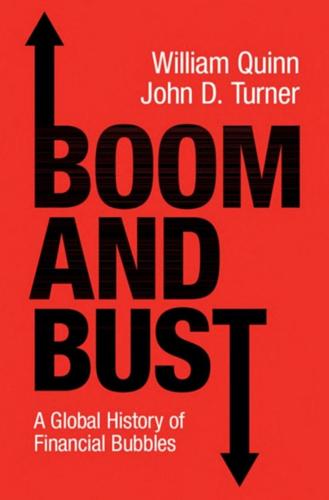
Boom and Bust: A Global History of Financial Bubbles
by
William Quinn
and
John D. Turner
Published 5 Aug 2020
Debt-to-equity swaps were considered in Spain, Portugal, Piedmont, Denmark and Sweden, and proposals to set up colonial trading companies reached Russia, Vienna and Sicily. The motivation in each was broadly similar: a Spanish conversion scheme was sold to the king as a means to ‘imperceptibly pay off’ his debts, and a proposal to create a Russian land bank argued that it would enable the Tsar to raise funds for warfare. Hamburg, Venice, Spain and Portugal also experienced minor financial booms.56 However, the level of marketability in financial markets was generally too low for any significant bubble to develop outside of England and France. CAUSES As well as being the first documented financial bubbles, the 1720 bubbles were notable for having been explicitly and deliberately created by a small number of people.
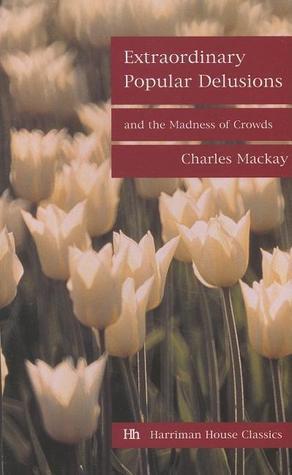
Memoirs of Extraordinary Popular Delusions and the Madness of Crowds - the Original Classic Edition
by
Charles MacKay
Published 14 Jun 2012
It is generally believed that he returned to Edinburgh in the year 1700. It is certain that he published in that city his Proposals and Reasons for constituting a Council of Trade. This pamphlet did not excite much attention. 1.4 1.5 1.6 1.7 1.8 In a short time afterwards he published a project for establishing what he called a Land-bank 2* , the notes issued by which were never to exceed the value of the entire lands of the state, upon ordinary interest, or were to be equal in value to the land, with the right to enter into possession at a certain time. The project excited a good deal of discussion in the Scottish parliament, and a motion for the establishment of such a bank was brought forward by a neutral party, called the Squadrone, whom Law had interested in his favour.
…
Louis is reported to have inquired whether the projector were a Catholic, and, on being answered in the negative, to have declined having any thing to do with him. 3* It was after this repulse that he visited Italy. His mind being still occupied with schemes of finance, he proposed to Victor Amadeus, duke of Savoy, to establish his land-bank in that country. The duke replied that his dominions were too circumscribed for the execution of so great a project, and that he was by far too poor a potentate to be ruined. He advised him, however, to try the King of France once more; for he was sure, if he knew any thing of the French character, that the people would be delighted with a plan, not only so new, but so plausible.

Moneyland: Why Thieves and Crooks Now Rule the World and How to Take It Back
by
Oliver Bullough
Published 5 Sep 2018
After the members of the jury found him guilty, the judge gave them a life’s exemption from doing jury service again, and they gave him a round of applause. Strange though it may sound, these two bizarre cases are just a tiny part of the criminal epidemic connected to Ronald Raven’s old home: land-banking fraud, VAT fraud, timeshare mis-selling, they all trace back here. Media outlets in Norway, Italy and Romania, as well as Britain, Ukraine and the United States, have detailed crimes linking back to this one house. In one curious crime, a gang of inept crooks pretended to make a film so as to claim tax relief; then, when they were caught, actually did make a film, as if that would somehow erase their original misdeed.

Brexit and Ireland: The Dangers, the Opportunities, and the Inside Story of the Irish Response
by
Tony Connelly
Published 4 Oct 2017
But officials can’t afford to wait until a deal is done. ‘We’re going to be looking at customs declarations on day one,’ says a member of the Revenue team. ‘We have to plan on that basis. But we may find that when we have to start, we can’t move fast enough.’ The team is discreetly talking to the Office of Public Works (OPW) about the government’s land banks. While there is a healthy stock on the eastern part of the border, there is less land on the western side. Revenue is also tendering for a new IT system that will be compatible with the Union Customs Code. This can be funded by the EU, since Ireland collects VAT and tariff receipts on the EU’s behalf (Ireland earns €50 million each year in the process).
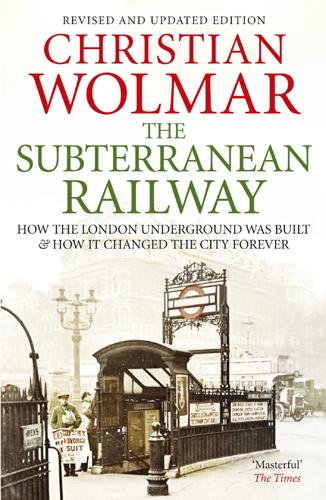
The Subterranean Railway: How the London Underground Was Built and How It Changed the City Forever
by
Christian Wolmar
Published 30 Sep 2009
However, none of these developments were on the Metropolitan’s own land and its extensive holdings were to be the real catalyst to the creation of Metroland. The company had been very fortunate – or possibly far-sighted – when in two Acts of Parliament during the mid 1880s it had separated off the finances of its land bank, accumulated as a result of deals with landowners. Normally, railway companies were precluded from developing surplus land they acquired and were required to dispose of it. However, the Metropolitan uniquely had the right to grant building leases and to sell ground rents, a concession the company had won during the early days of the Metropolitan in its negotiations with the City of London.

The Establishment: And How They Get Away With It
by
Owen Jones
Published 3 Sep 2014
The language used was deliberately inflammatory, attempting to paint the Labour leader as a dangerous extremist. Miliband’s speech ‘raised the hairs on the back of my neck’, declared John Cridland, the director of the CBI, the big-business federation. According to the Conservative Mayor of London, Boris Johnson, Miliband’s commitment to a crackdown on land-banking amounted to ‘Mugabe-style expropriations’, while Graeme Leach, chief economist at the Institute of Directors, saw it as ‘a Stalinist attack on property rights’. Miliband, frothed David Cameron, wanted to live in ‘a Marxist universe’; according to Chancellor of the Exchequer George Osborne, resolutely on script, Miliband had voiced ‘essentially the argument Karl Marx made in Das Kapital’.
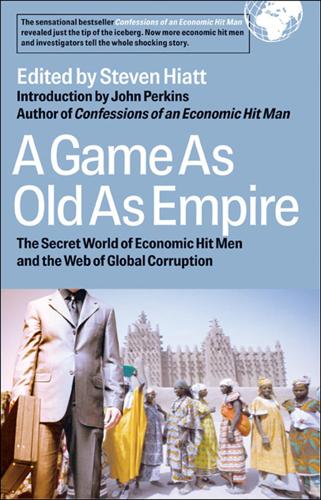
A Game as Old as Empire: The Secret World of Economic Hit Men and the Web of Global Corruption
by
Steven Hiatt; John Perkins
Published 1 Jan 2006
Presidents Jefferson, Monroe, and Madison—all of whom were Virginia tobacco growers and slave-owners who were mortgaged up to their eyeballs—allowed their London private bankers to twist in the wind, struggling to collect their loans in U.S. courts. • In 1841-42, eight U.S. states and the Territory of Florida defaulted on all their debts—twice the size of the federal government’s debt at the time. As in the case of Third World debt, most of the proceeds turned out to have been borrowed abroad and invested in lousy projects—for example, land banks controlled by big plantation owners. This produced one of the first “emerging market” debt crises in history. • In 1933, under the influence of companies that were desperate to survive the Great Depression, the U.S. Congress unilaterally abrogated the “gold clause” for all corporate bonds listed on the New York Stock Exchange.
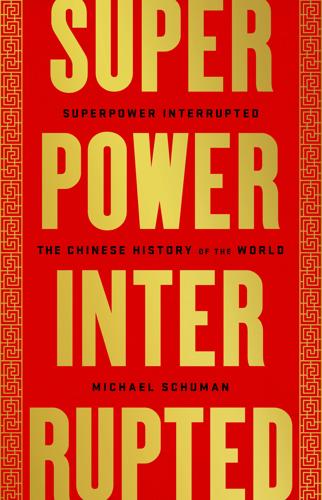
Superpower Interrupted: The Chinese History of the World
by
Michael Schuman
Published 8 Jun 2020
The achievement convinced the emperor, another mythical figure named Shun, that Yu could be trusted with the throne. Yu, as is considered decorous, protested that the job should go to someone more worthy, but Shun would have none of that. “Go and attend to your duties,” Shun directed.2 That he did, with unparalleled flair. He surveyed the land, banked up marshes, and improved the roads, and farmers flourished. Governing with virtue, he justly distributed the resources of the realm to aid the poorest provinces, thus ensuring widespread prosperity. Yu’s family, however, broke with political precedent. His two esteemed predecessors—Emperors Yao and Shun—had designated their successors based on merit, not blood.

The White Man's Burden: Why the West's Efforts to Aid the Rest Have Done So Much Ill and So Little Good
by
William Easterly
Published 1 Mar 2006
The system of formal titles thus gradually lost correspondence with those who the locals knew owned the land. An increasing number of formal titleholders resided in the local graveyard. The opportunistic behavior that bedevils market transactions also plagued land sales in Kenya. Sellers who had earlier pledged their land as collateral for a loan would fail to inform the buyer of this claim on the land. Banks found it politically difficult to auction off the collateral land after loan default, since land owned by kin of the defaulter surrounded it. Some sellers sold to several buyers at once, using different elders as witnesses. The adjudication committees required that sellers retain enough land for the subsistence of their own families.

Inside the House of Money: Top Hedge Fund Traders on Profiting in a Global Market
by
Steven Drobny
Published 31 Mar 2006
If we find a cheap real estate company, we’re happy to buy the stock.We currently have exposure to real estate stocks in Poland, Finland, Sweden, Spain, Hong Kong, Indonesia, Singapore, and Taiwan, yet we don’t own a single building or piece of land.We also own stocks of real estate bankers, builders, developers, land banks, real estate investment trusts (REITs), and so on. How correlated is the real estate allocation to the 20 percent that you have in equities? We haven’t been involved long enough to get a reliable number. All I know is that it has done well, but even that doesn’t mean anything. Globally, real estate could be peaking right now, but if it starts coming down, we’ll hit our stop-loss and get out.

The Billionaire Raj: A Journey Through India's New Gilded Age
by
James Crabtree
Published 2 Jul 2018
“In police, tax collection, education, health, power, water supply—in nearly every routine service—there is rampant absenteeism, indifference, incompetence, and corruption,” he wrote.57 Acquiring land was one notorious problem, where complex rules made it hard for businesses to buy plots directly from farmers, forcing them to rely on government-held “land banks” instead. Bureaucrats also controlled reclassification for industrial use, allowing them to vastly increase land values. All of this was an invitation to collusion, giving birth to what was often described as a “land mafia,” meaning a loose coalition of entrepreneurs and officials who plotted to buy up land, reclassify it and sell it on for huge profits.
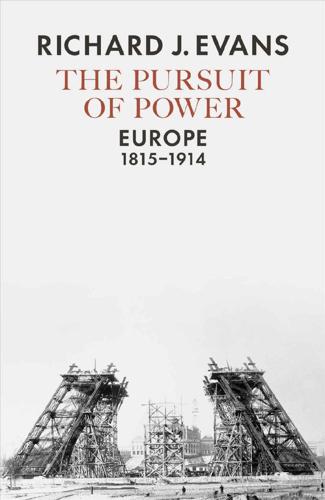
The Pursuit of Power: Europe, 1815-1914
by
Richard J. Evans
Published 31 Aug 2016
By mid-century there were more than two million people in Prussia and Mecklenburg earning a living either in part or in whole as farmhands; also by this time, 30 per cent of the agrarian population in Austria were wage-labourers; in Bohemia the proportion was 36 per cent. Many better-off peasants now found themselves in a position to purchase extra land or rent it from middle-class proprietors. The land owned by Russia’s peasants increased by a quarter from 1877 to 1905. Much of the increase was funded by a Peasant Land Bank set up by the state in 1882. Yet such a surge did not keep pace with population growth. By the end of the nineteenth century, nearly 40 per cent of landholdings in France consisted of less than 2.5 acres; in Denmark the proportion of holdings under 1.2 acres had reached 27 per cent, in Germany 33 per cent.
…
The Russian peasant uprisings of 1905–7 were brutally put down by the police and army, but led directly to government measures to defuse rural discontent in an attempt to restore order and stability after the unsuccessful revolution in the cities. These included the final cancellation of redemption payments, the freeing-up of the peasant land market to allow individual farmers greater flexibility in buying and selling land outside the commune, and the extension of the Peasant Land Bank. Encouraged by the leading minister Pyotr Arkadyevich Stolypin (1862–1911), a new class of substantial peasant farmers began to emerge in the following years, the famous kulaks later so reviled and persecuted under Stalin. But Stolypin’s intention of destroying the influence of the peasant commune was widely frustrated by peasant resistance, reflecting widespread attachment to collective methods of exploiting the land.
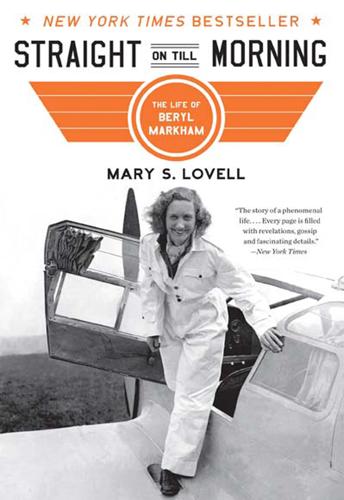
Straight on Till Morning: The Life of Beryl Markham
by
Mary S. Lovell
Published 1 Jan 1983
Monday nights there was always a terrific party. On Tuesday we would get all the supplies we needed to last until the next race meeting, and then we’d drive back to Naro Moru again – singing at the tops of our voices, because now we were glad to be going back. We lived in a different way up there. It was pure fantasy land. ‘Banks are robbers with a licence,’ Beryl used to grumble when she owed them thousands. By the mid 1960s she was running everything herself, for Jørgen had bought his own farm at Nanyuki in partnership with the Bathurst Normans’ son-in-law. She was hopeless at administration and budgeting and at times, despite her huge success, was so broke that Buster had to scratch around to pay the horses’ feed bills.
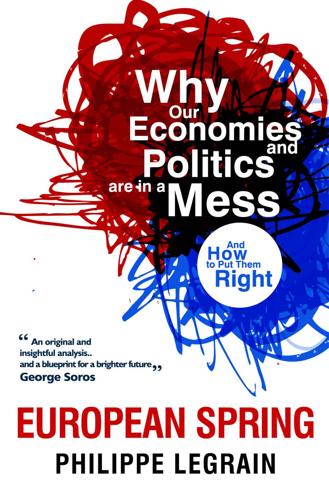
European Spring: Why Our Economies and Politics Are in a Mess - and How to Put Them Right
by
Philippe Legrain
Published 22 Apr 2014
The supply of property is restricted by planning regulations that strictly limit where new housing can be built. Local authorities have little incentive to open up land for development because they don’t capture any of the increase in the value of the land. Building on a “green belt” around cities is especially tightly controlled. Big property developers with vast land banks also maximise their profits by limiting how many new properties they build each year – just as countries in the OPEC cartel maximise profits on their oil reserves by restricting how much they sell each year. This artificial scarcity drives up land prices, especially when combined with rising demand: for living space from a rising and (until recently) richer population made up of many more smaller households, together with speculative demand in anticipation of price increases.

War and Gold: A Five-Hundred-Year History of Empires, Adventures, and Debt
by
Kwasi Kwarteng
Published 12 May 2014
In trying to convince the French, Law praised the benefits to England and Holland of the banks of London and Amsterdam. He believed he could show that setting up ‘an establishment of a similar nature, but upon an improved plan in Paris’, would produce ‘the like good effects’ in France.16 The bank Law proposed would be secured on two types of assets. First, it would be a land bank, secured on the landed property of the whole kingdom. It would also be backed by the entire royal revenue. Law’s Banque Générale was duly established in May 1716. But the creation of the bank which would issue paper credit to the French monarchy was only one aspect of John Law’s financial plan. Soon afterwards, he began to ‘lay open the plan of the great and stupendous project he had long meditated’.
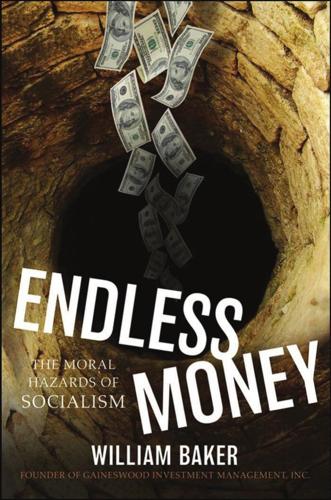
Endless Money: The Moral Hazards of Socialism
by
William Baker
and
Addison Wiggin
Published 2 Nov 2009
Although the founding fathers had succeeded in creating a Constitutional hurdle against the outright printing of money by the states, by the early 19th century a new form of paper money production would take root: Fractional reserve lending. It would be particularly pernicious when associated with the government sanction of a central bank that would be supportive of heavy public spending for projects such as canal building or the purchase of frontier land. Bank Money and Public Works: From Boom to Bust Early in the nineteenth century the manufacture of money through leveraging multiple loans against a reserve of specie took hold in the new nation. “Bank money,” as it is sometimes called, rapidly exceeded specie reserves handily. Its growth, periodic overexpansion, and contraction 46 ENDLESS MONEY became the DNA encoding cyclicality to the economic corpus, but the use of silver and gold at the base provided restraint that would reign in moral hazard and provide a safe haven for savers.
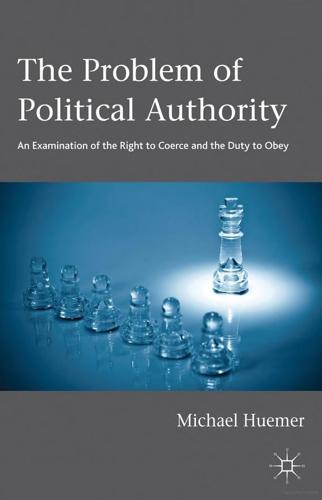
The Problem of Political Authority: An Examination of the Right to Coerce and the Duty to Obey
by
Michael Huemer
Published 29 Oct 2012
Plato (1974, 73, 403e) uses a similar phrase, where he has Glaucon state that ‘it would be absurd for the guardian to need a guardian.’ 41 317 U.S. 111 (1942). 42 See Carter v. Carter Coal Co., 298 U.S. 238 (1936); A. L. A. Schechter Poultry Corp. v. United States, 295 U. S. 495 (1935); Louisville Joint Stock Land Bank v. Radford, 295 U.S. 555 (1935). 43 See NLRB v. Jones & Laughlin Steel Corp., 301 U. S. 1 (1937); West Coast Hotel Co. v. Parrish, 300 U.S. 379 (1937). 44 Harlan Stone, Hugo Black, Stanley Reed, Felix Frankfurter, William Douglas, Frank Murphy, James Byrnes, and Robert Jackson. The exception was Owen Roberts, a Hoover appointee.

Capitalism in America: A History
by
Adrian Wooldridge
and
Alan Greenspan
Published 15 Oct 2018
In some ways the federal government was pathetically weak: it hardly had any employees and was still unsure about its powers to tax or legislate. In one way, however, it was extraordinarily powerful: thanks to a succession of clever land purchases, it had some two billion acres of land at its disposal, a territory greater than any Western European nation. And it cleverly used this land bank to pay off its debts, modernize its infrastructure, and extend its empire westward. The Homestead Act of 1862 offered 160-acre plots of free land to anyone who could occupy and improve it (making the gift conditional on improvement was quintessentially American). Men who in the Old World might have hoped to acquire a 10- or 20-acre plot over many generations could get their hands on twenty times that by crossing the Atlantic and filing a claim.
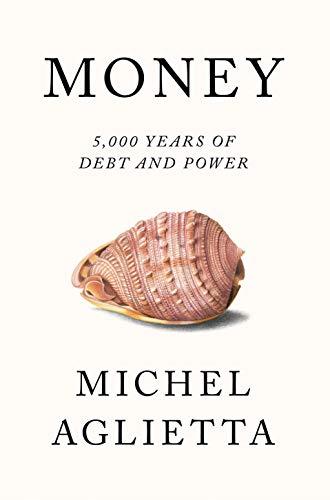
Money: 5,000 Years of Debt and Power
by
Michel Aglietta
Published 23 Oct 2018
This proposal met with heavy criticism, which confirmed the depth of the North–South rivalry. The bill that resolved to create the Bank was nonetheless adopted in 1791, under a twenty-year charter. Finally, through the Coinage Act of 1792, Congress anchored the dollar in a two-metal system.46 A non-provincial, non-land banking system had been put in place. What does this experience tell us about the formation of principles of sovereignty? This formation was evidently an evolutionary process, in which there were explicit contradictions, debated in structures which ultimately allowed for their overcoming. The collective that had emerged from the war was now transformed and institutionalised.

The Relentless Revolution: A History of Capitalism
by
Joyce Appleby
Published 22 Dec 2009
The fact that the clipped silver coins passed at face value even with a quarter to half their silver clipped away suggested the possibility that other things might be used for money. If money’s status as legal tender counted most, then it should be possible to find gold and silver substitutes. Writers began to tout various schemes to increase currency through paper issued by land banks. Economic Development in a New English Regime The year 1689 had brought Mary and her Dutch husband, William, to the throne of England, an event that precipitated the first of many wars with France. The animosities behind these wars had an economic impact, triggering a retreat from European trade and the raising of tariffs.
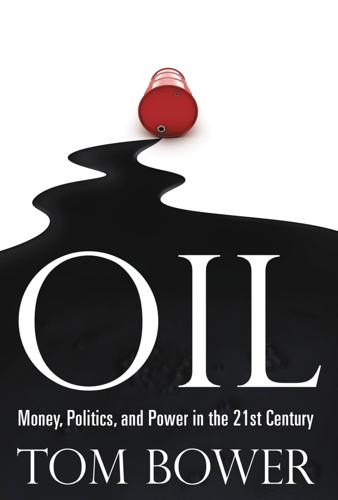
Oil: Money, Politics, and Power in the 21st Century
by
Tom Bower
Published 1 Jan 2009
Alternative energy was not a substantial business for oilmen, casting doubt for some on the future of the industry. The sharp differences between the oil majors were rapidly disappearing. BP, van der Veer was pleased to see, was similarly modifying Browne’s commitment to the environment. Its plan to inject carbon dioxide into oil wells near Aberdeen had been abandoned, the land banks for wind farms in the US, China and India were being reassessed, and BP was buying a 50 percent stake of Husky Energy to develop a $5.5 billion project in Canadian tar sands over eight years. BP’s renewables headquarters in County Hall was closed, and the green commitment was effectively abandoned.
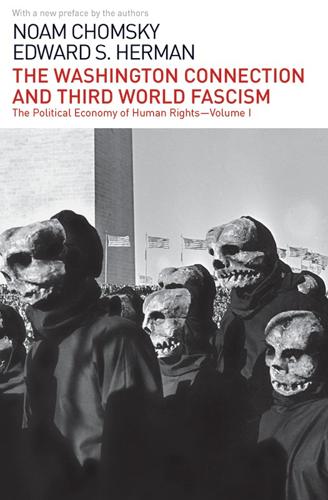
The Washington Connection and Third World Fascism
by
Noam Chomsky
Published 24 Oct 2014
Expenditures of the imperial court of the Shah are provided for in the Iranian state budget, which in 1976 gave the Shah, among other incidentals, a discretionary fund of $1 billion.76 The Shah’s personal assets are not published, but the Pahlavi Foundation controlled by the Shah owns property estimated as worth about $3 billion and direct family holdings of land, banks, insurance companies, hotels and industrial companies runs the family asset totals to unknown further large sums.77 Graft has long been endemic to the Shah’s Iran, and in the 1950s there was a major scandal involving allegations of massive looting of U.S. aid money by the Shah himself.78 The bribery revelations of recent years have pointed to the regular use of position by family and military insiders to “expedite” contracts, at a fee.

Aerotropolis
by
John D. Kasarda
and
Greg Lindsay
Published 2 Jan 2009
Stapleton’s replacement, the tented Denver International Airport (DIA), was the United States’ first greenfield hub in twenty years when it opened in 1995 and will likely be the last. It is perched on the high plains twenty-five miles northeast of downtown, a good twenty miles past Stapleton and seven times larger. With fifty square miles of land banked for future runways, terminals, and anything else it needs, DIA can float serenely behind its fences forever. Even if, in some perverse twist, the city spent another half century unfurling itself to its doorstep—and who would move a dozen miles past city limits just to butt heads again with an airport?

Money and Government: The Past and Future of Economics
by
Robert Skidelsky
Published 13 Nov 2018
However the government obtained its 394 No t e s 10 11 12 13 14 15 16 17 18 19 20 21 22 23 24 25 26 27 28 29 30 finance, speculators bought up the confiscated property at rock-bottom prices, and the real income of everyone else suffered a catastrophic fall. Ricardo (2005 (1810)), p. 76. Ibid., p. 78. Ricardo (2005 (1817)), p. 364. See Asso and Leeson (2012). For the Bank’s assertion, see Kynaston (2017), p. 93. A forerunner of the real bills doctrine was put forward by the speculator John Law (1671–1729), loans from whose proposed land bank were to be collateralized on the ‘productivity of the soil’. Thornton (1802). Schumpeter (1954), p. 720. Thornton (1802), p. 287. Ibid. Select Committee on the High Price of Gold Bullion (1810), Abstract. Peel (1819), c. 680. Fisher (1922 (1911)), p. 241. Attwood, quoted in Wright and Harlow (1844), p. 383.
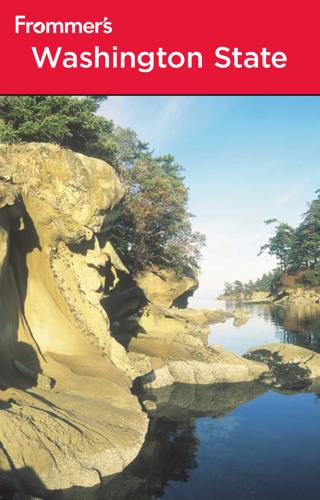
Frommer's Washington State
by
Karl Samson
Published 2 Nov 2010
A little farther south is Lime Kiln (& 360/902-8844; www.parks.wa.gov), the country’s first Point State Park whale-watching park and a great place to spot these gentle giants in summer. This latter park is open daily from 8am to dusk. Flanking the state park are Deadman Bay Nature Preserve and Lime Kiln Nature Preserve, two properties acquired for public use by the San Juan County Land Bank. Together the state park and the two preserves have more than 3 miles of hiking trails, making this the best hiking area on the island. As Westside Road moves inland, it becomes Bailer Hill Road. As you cross the island, watch for the picture-perfect Shepherd’s Croft, 2575 Bailer Hill Rd. (& 360/378-6372), a sheep farm set behind a white picket fence.

O Jerusalem
by
Larry Collins
and
Dominique Lapierre
Published 31 Dec 1970
"The Jews who will it," it began, "shall have a state of their own." Two years later, Herzl formally launched his movement with the First World Zionist Congress in the gambling casino of Basle, Switzerland. The delegates to Herzl's congress elected an international Jewish executive to guide the movement, created a Jewish National Fund and a Land Bank to begin buying land in the area in which he hoped to create his state, Palestine. Then they picked two indispensable symbols of the state whose foremost claim to existence was in the fervor of their speeches, a flag and a national anthem. The flag was white and blue for the colors of the tallith, the shawl worn by Jews at prayer.
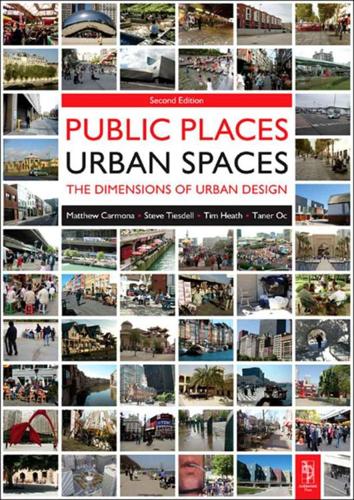
Public Places, Urban Spaces: The Dimensions of Urban Design
by
Matthew Carmona
,
Tim Heath
,
Steve Tiesdell
and
Taner Oc
Published 15 Feb 2010
Without these frictions to spatial mobility, it is likely that many fewer downtown business coalitions would have formed.’ Landowners own land prior to the commencement of development; during the development process the developer holds the land. With the exception of those holding land with the expectation of subsequently developing it (e.g. builders or developers with land banks), landowners do not normally take an active role in the development process and simply release land for development when offered a sufficient price. Their objectives are, thus, usually short-term and financial. Landowners (and developers holding land) influence the development process in four broad ways:• By releasing or not releasing land: Adams (1994) makes a distinction between ‘active’ and ‘passive’ landowners.

EuroTragedy: A Drama in Nine Acts
by
Ashoka Mody
Published 7 May 2018
Now in a different role, he adopted a more soothing tone. In April 2007, as the subprime crisis heated up in the United States and questions about property valuations in Spain and elsewhere grew more insistent, Fernández Ordóñez maintained that property prices and the economy would glide down from their giddy heights to a “soft landing.” Banks, he said, had the financial cushions to absorb losses.129 In June, as further signs of distress in US mortgage markets emerged, he said that demand for homes would hold up in Spain, and extensive defaults on mortgages were unlikely.130 And in September, by which time financial markets were truly nervous, Fernández Ordóñez said: “Spanish lenders face this period of turbulence from a position of strength.”131 The banks, he again asserted, had built up large buffers during the good times precisely to help tide them over in such periods of stress.

The Last Tycoons: The Secret History of Lazard Frères & Co.
by
William D. Cohan
Published 25 Dec 2015
He knows you by reputation and Carr believes that at the appropriate point a meeting between you and Levitt should be arranged." Felix went on in the memo to muse about potential acquirers of Levitt, including large oil companies, because "they are already active in the real estate business...plus the fact that they have the cash resources required in any kind of a land banking operation," or "companies like Alcoa, Kaiser, or eventually, Georgia Pacific." Felix concluded, "In any case, I believe that, from everything I have been told, in its field Levitt & Sons is the number one company; its current business seems to be profitable and growing and if proper safeguards can be taken for retention of management it should be a saleable property.

From Peoples into Nations
by
John Connelly
Published 11 Nov 2019
The response of Polish society was cultural and economic self-defense: lending libraries with more than a thousand branches were established by 1890, from which parents could borrow books to teach their children the Polish language, history, and culture that were absent from the state schools; and Polish credit associations, land banks, agricultural circles, and trade unions were founded, through which Polish farmers and workers could pool savings, learn trades, and defend their interests. The repression of Polish culture reached its early heights during Bismarck’s Kulturkampf of the 1870s, but after that, it still remained onerous.
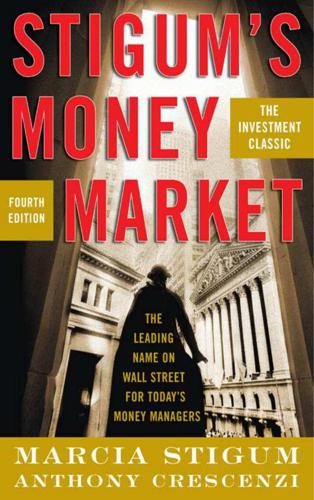
Stigum's Money Market, 4E
by
Marcia Stigum
and
Anthony Crescenzi
Published 9 Feb 2007
As for the federally related institutions, there are the Federal Home Loan Bank System, which lends to the nation’s savings and loan associations as well as regulates them; the Government National Mortgage Association, which funnels money into the mortgage market; Banks for Cooperatives, which make seasonal and term loans to farm cooperatives; Federal Land Banks, which give mortgages on farm properties; Federal Intermediate Credit Banks, which provide short-term financing for producers of crops and livestock; and a host of other agencies such as the Maritime Administration, the Tennessee Valley Authority, and the Export-Import Bank of the United States.